Unforgettable Corbet
- With Vihang Travels
- May, 2021

Indian Paradise Flycatcher
Pre-tour Drama
Is it going to happen?
Corbett Park is arguably the best forest in India and I had never seen it so far. This was always on the wishlist of any forest lover and why would I be an exception.
But so far, the opportunity never came. Finally, in Dec’19, Makarand announced the Corbett tour for Apr’20 (Vihang had not gone there for 10+ years), and without wasting any time I took the offer. Then in January, we got confirmation about the Dhikala Forest Rest house booking as well. Quickly the train/flight bookings were done and we were all set for the Corbett experience.
But God had something else in mind!!
In March the Covid pandemic came and all hell broke loose. By March-end, the lockdown started and with it, our Corbett trip was gone down the drain!
Come January’21, things were looking a little brighter on the COVID front and Makarand reinitiated the Corbett trip, this time in May first week with the same set of 8 participants as last year. All of us agreed to the dates and we once again started the Corbett dreams. Another round of train/flight booking was done. The easier way to reach Corbett is to take a flight to Delhi and then catch the overnight train to Ramnagar (from there Corbett park is pretty close).
Things were hunky-dory till March-end and then the COVID monster struck again. With increasing cases, our trip was once again in jeopardy. I had done a Northeast birding tour in April, so was confident that we will make it for Corbett as well (but others were not so confident).
In early April we got our first shock. The airline had canceled our Delhi flight. A quick discussion among the participants (on WhatsApp off-course) and Yuwaraj got us booked on an overnight train from Mumbai to Delhi (reaching Delhi by evening so we could catch the 10 pm train to Ramnagar)
All 8 of us started the preparations but by the last week of April (now we had to undergo the RTPCR test), 3 of us had to cancel the trip. But we kept the spirits high and decided to take the plunge anyway.
Then came the next hurdle (and the hurdles kept coming relentlessly), even our Mumbai-Delhi train got canceled. Now what: another round of discussions and we booked the August-Kranti Rajdhani express. The only problem was, we were now scheduled to reach Delhi by 10 am and our next train was at 10 pm. Where do we spend these 12 hours in Delhi? The city was becoming infamous for the huge spurt in Corona-positive cases and all our relatives/friends expressed their genuine concerns (not that we were liking the situation)!!
Makarand then came up with a plan of booking a hotel for half day. Also booked a cab for station-hotel-station journeys and decided to hole up inside the hotel.
All of us got our negative test reports as well, so things now looked all set. We started as planned by 5 pm from Mumbai central station. The train was absolutely empty (maybe just 20% occupancy; so, it was natural for railways to cancel trains). We all had a good night’s sleep and were fresh in the morning.
At around 8 am, I just checked my phone (somehow the silent mode was on) and was surprised to see 3 missed calls. The first 2 were from my friend Sameer (who was with me in the northeast and is a big Corbett fan) and 1 more from my younger brother. My brother told me that he also got alerted by Sameer about certain notifications from the Central ministry. It was asking all sanctuaries/parks (nationwide) to close down immediately.
I checked my WhatsApp messages and read the circular sent by Sameer. This was very scary! I showed it to Makarand/Yuwaraj. We got a little worried but then decided to first reach Delhi and then do further inquiries.
At the hotel, we contacted our local contact in Ramnagar (Mr. Sunil Namjoshi). He got in touch with the forest officer and told us that they haven’t yet received the official circular. And considering that it was Saturday, that they may only get it on Monday. That’s called Wishful (or is it the Desperate?) thinking!
Then we all decided to go to Ramnagar and see what’s in store for us. But all the while, there was this lurking danger of going to Ramnagar and returning immediately without any safaris. In hindsight, had the central circular been issued a couple of days earlier, we would not have taken this trip but now there was hardly any choice.
Things went as planned till we reached Ramnagar at 4 am. Thankfully, Sunil-ji had arranged for us to stay at a resort for few hours (the forest gate at Dhangadi opens only at 10 am). As we reached the resort, he gave us the news that we will be allowed only a 1-day stay. So net-net, we would reach in the afternoon, do a safari and then return!! Okay, so we are at least getting ONE SAFARI at Dhikala!!
We kept ourselves as cheerful as possible and took the gypsys at 9:30 for Dhangadi. At the gate, they checked our COVID -ve certificate. And surprisingly, we got the fantastic news that the forest guys were allowing us a stay of 2 nights!! Really? We all were so happy, just cannot tell the joy in words!! So, we are now likely to do 3 jungle safaris! A big positive after so many setbacks.
May 2, 2021
After all this preamble, let me get into the real stuff. We were at the Dhangadi gate at about 10:30 am. Our stay was arranged at the Forest rest-house in Dhikala and it was about 35kms from the gate (the entire distance is forest road and it was as good as doing a safari round). Inside the zone, there are 3-4 other Rest-houses but the Dhikala one was the most preferred. These days the elephant, tiger sightings were happening near the rest-house itself.
As soon as we took the forest road, we were greeted by a Crested Serpent Eagle (a little later there was another one and this one was guarding its nest). But before that, while in the resort itself, we were able to see the pairs of Indian white-eye, common tailor-birds & Purple Sunbirds.
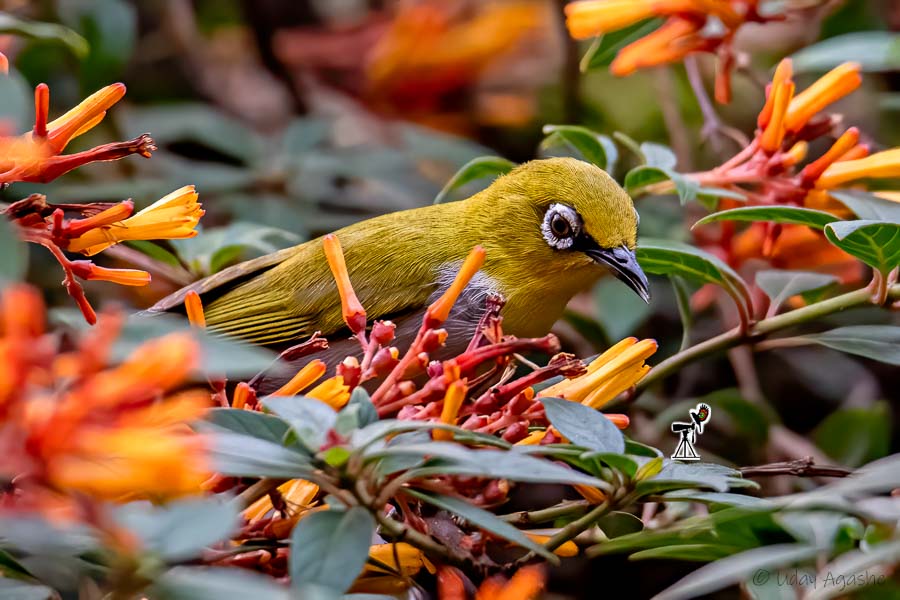
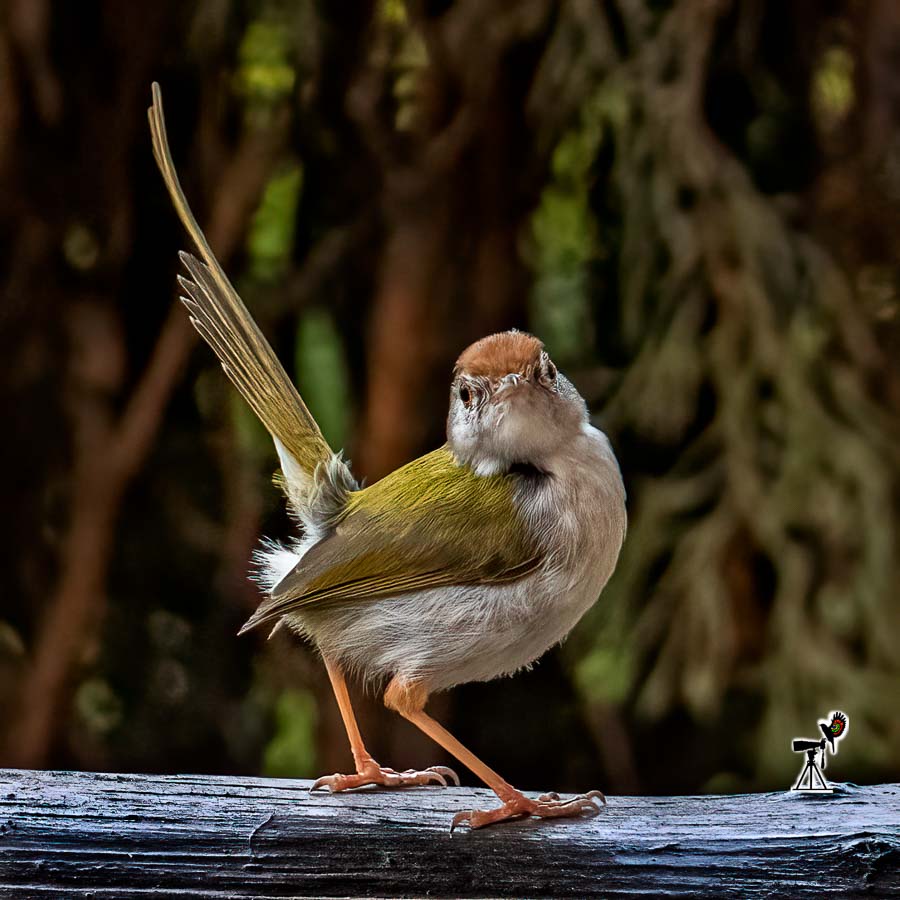
Common Taiorbird
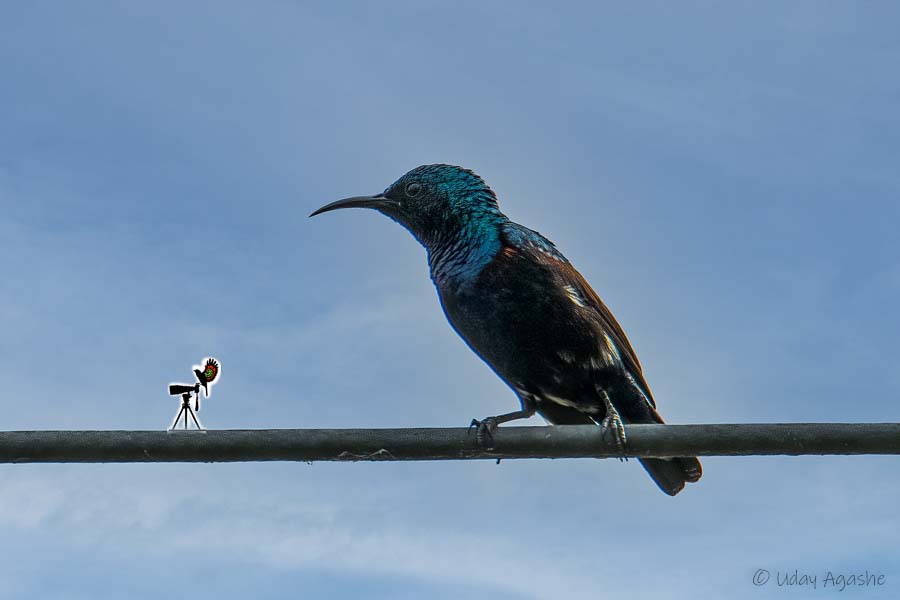
Purple Sunbird
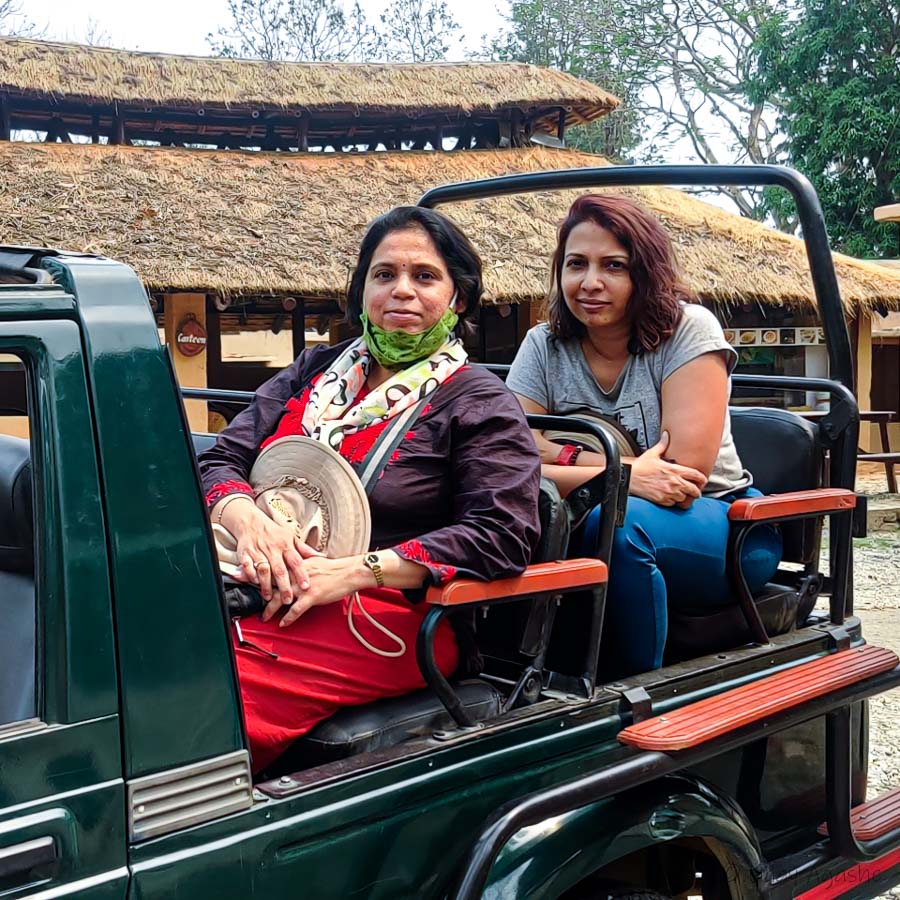
Joy of doing the safari!
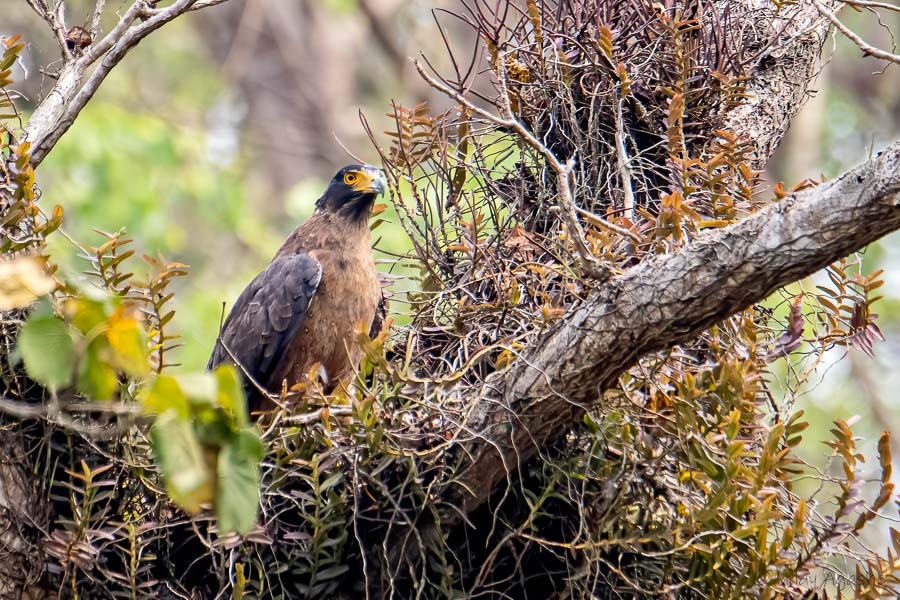
Crested Serpent Eagle
As we were moving on the path, there were dried leaves on both sides; there we heard a noise of cracked leaves. Our driver (Yamin) was alert and he asked us to look for a monitor lizard (because of our vehicle, the lizard tried to stay away from the road and in that process walked on the dried leaves). After that one incident, we were more alert and were able to see 2 more monitors.
On the way, we also saw many other birds. The list included lineated barbet, grey-headed woodpecker, white-crested laughing thrush, juvenile of crested hawk-eagle, Himalayan bulbuls, yellow-footed green pigeon, red junglefowl, and even the Kalij pheasant pair.
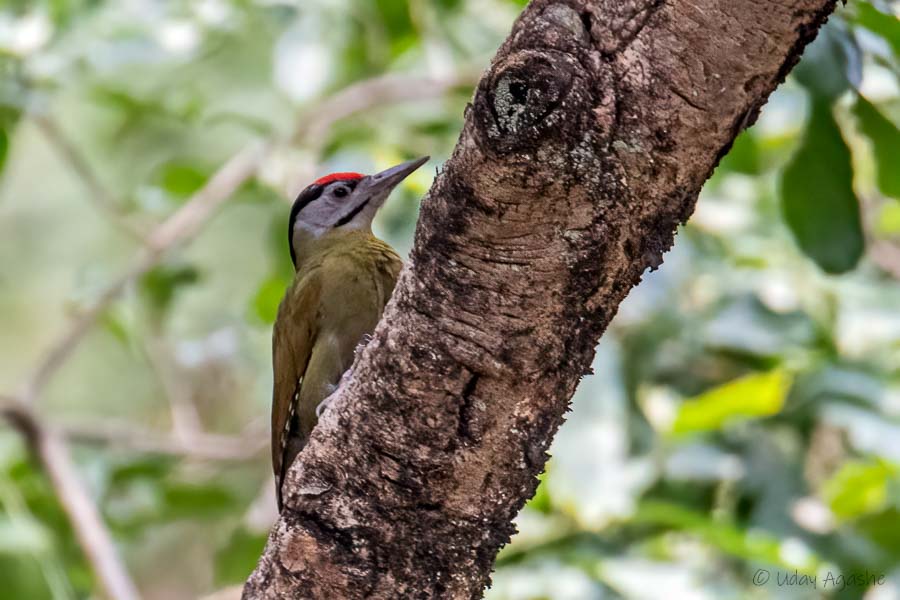
Woodpecker
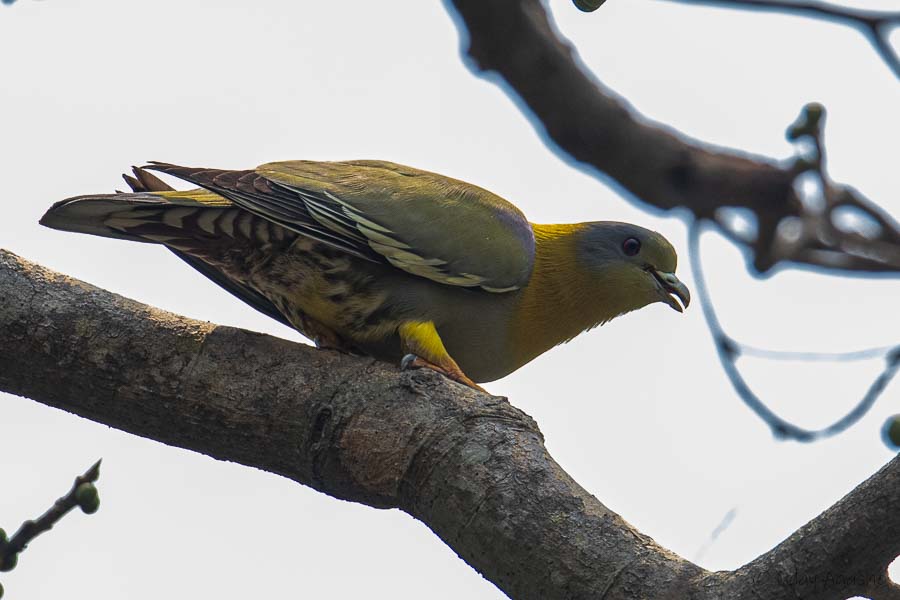
Green Pigeon
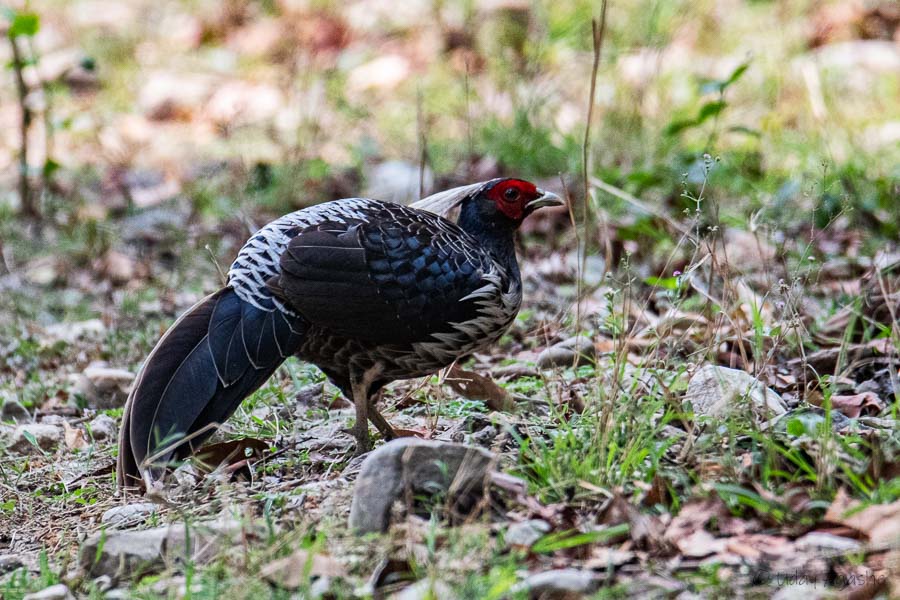
Kalij Pheasant
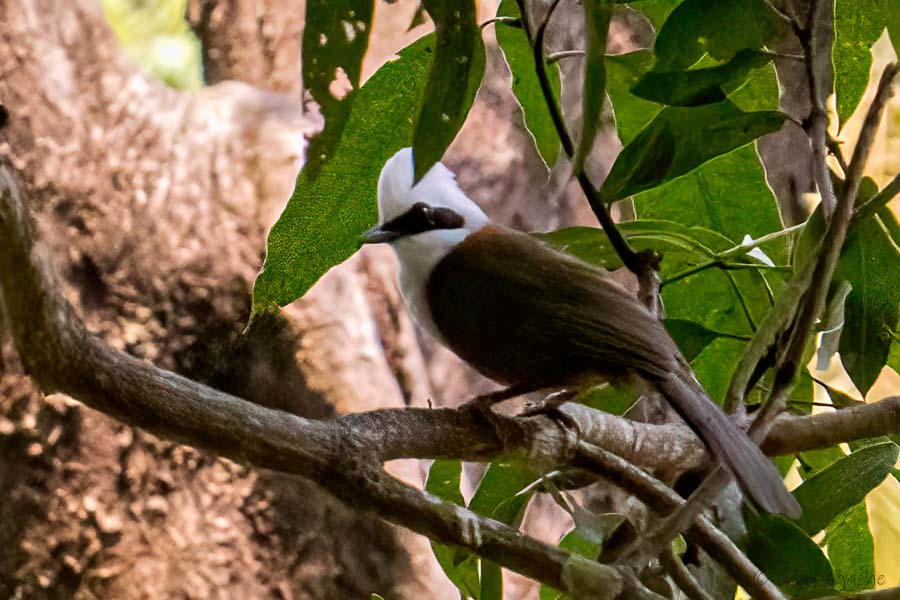
White-crested Laughingthrush
All along the road, we could see many dried river beds. Come November, these rivers are filled with water and the view at that time must be even more amazing.
With all the birding on the way, we reached the rest-house only by 1 pm. We quickly checked into our dormitory and headed for lunch. The afternoon safari was to start at 2:45 so we had time to look around the rest-house. It is a big campus and on one side, there is a huge river basin. We even saw a few elephants from there. While moving around the campus, we also saw a white-browed wagtail.
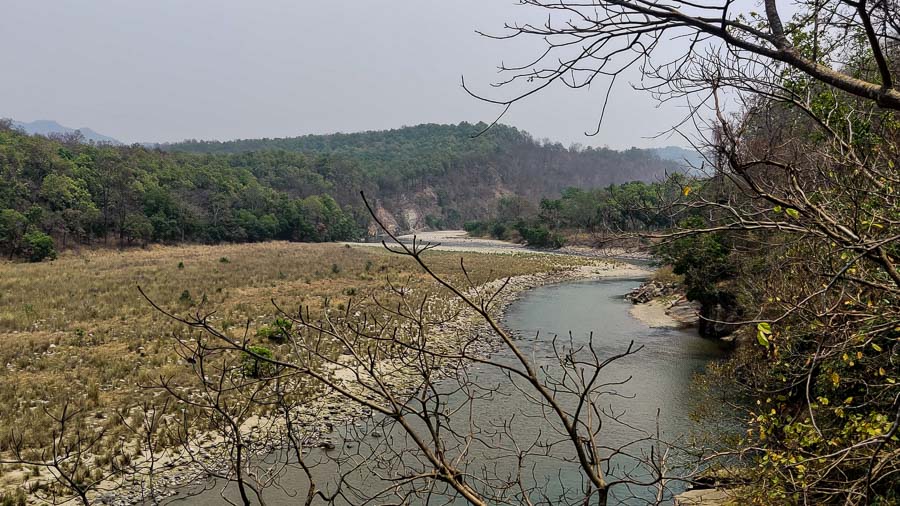
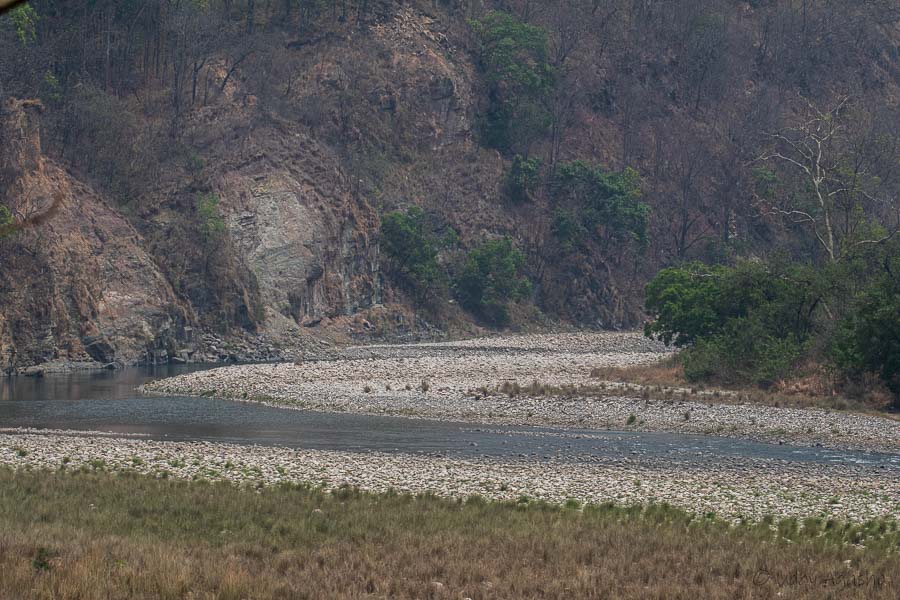
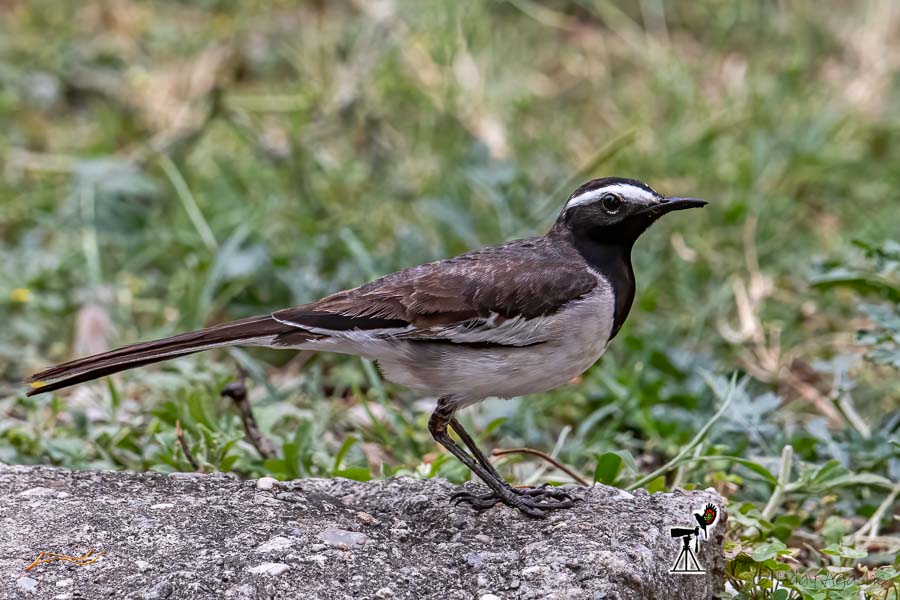
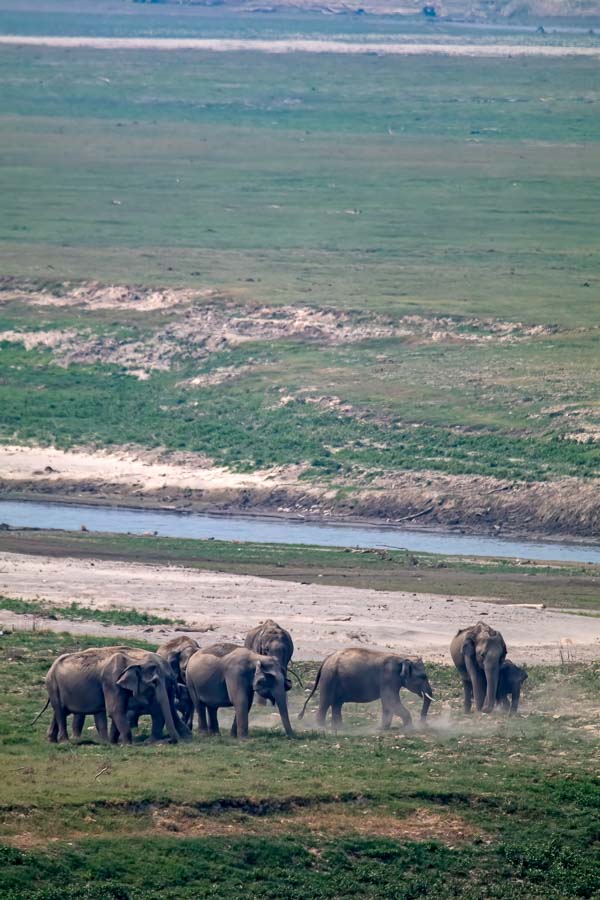
As there was the announcement about park-closure, a lot of rest-house staff had already gone away. But considering that few guests like us were still camping, they had kept open a small canteen. Besides the staff, even the tour guides were missing!! We were therefore left only with our drivers as guides.
Our first safari began at the scheduled time of 2:45. Based on the information received till then, there were 2 possible locations for tiger sighting. One was the Sambar road (it got named because of Sambars seen from that road) and another the grassland area. Both were within 10 minutes' driving distance from the rest-house. Most of the other vehicles (there were only about 7-8 vehicles in the park) went in the direction of Sambar road, so our driver suggested going the other way.
Very soon, I got to see a lifer, the pair of Red-breasted parakeets. On the grassland area, there were no signs of tigers (no pug-marks or calls), so we drove further to a water body. A group of wild elephants was enjoying the pool bath. After about 15-20 minutes, they all came out of the waters and one of them didn’t like our approach. It gave us a mock charge. It could have been dangerous to stay on, so we quickly sped away.
From there we decided to try our luck on the Sambar road. On the way, we saw a big group of spotted deer on the grassland and another set of elephants trying to cross the road ahead of us.
As soon as we reached the Sambar road on a turning, we saw the Oriental Honey Buzzard being troubled by lapwings.

Red-breasted Parakeets


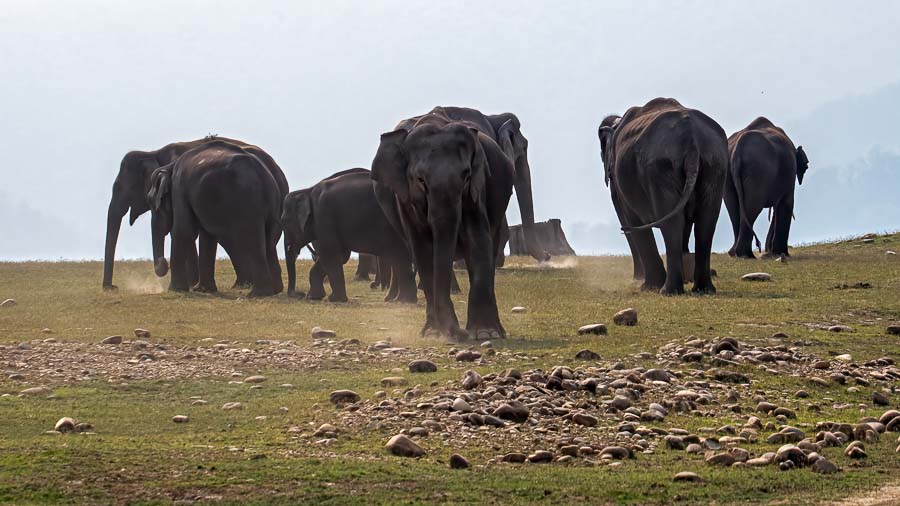
Lone aggressive Elephant
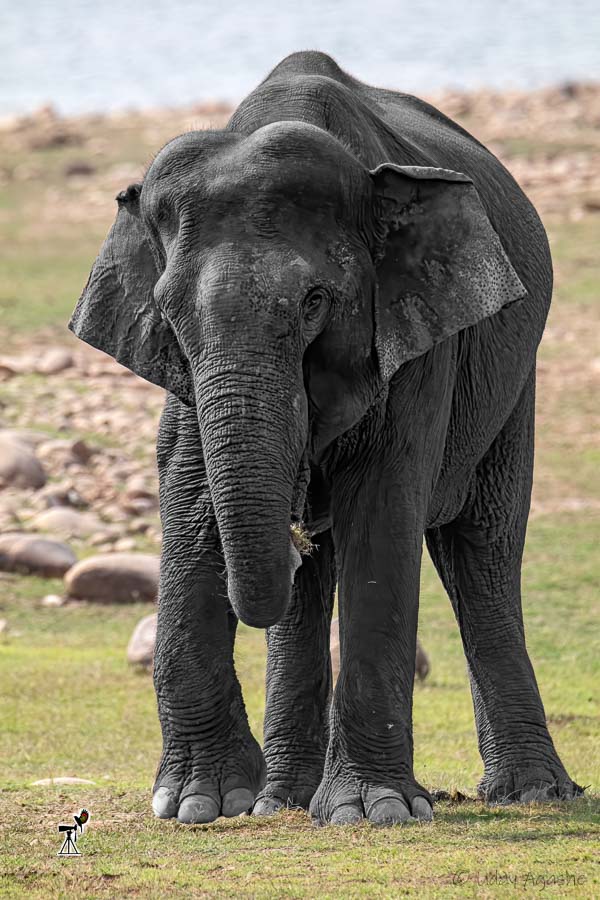
While we were photographing the buzzard, our other gypsy has taken the turn and there was a tigress in front of them on the road. They didn’t realize that we had stopped just before the turn and we had no clue they had already seen a tiger. We took out time with the buzzard (wondering why they did not stop!!)
But not much was lost as the tigress on the road was in a relaxed mood and she was sleeping right there on the road. Gypsys were standing on both sides but she was very comfortable. She was probably aware by now, that the gypsys don’t come too close (Just for information: in case the vehicles venture too close, the driver/guides can get suspended by the forest department).
That was 4 pm and from there for the next half hour, the tigress did not bother to get up. Occasionally she was opening eyes, give a look at the people and then go back to her slumber. Then for the next 45 minutes, she changed her place a couple of times allowing us some better photos.

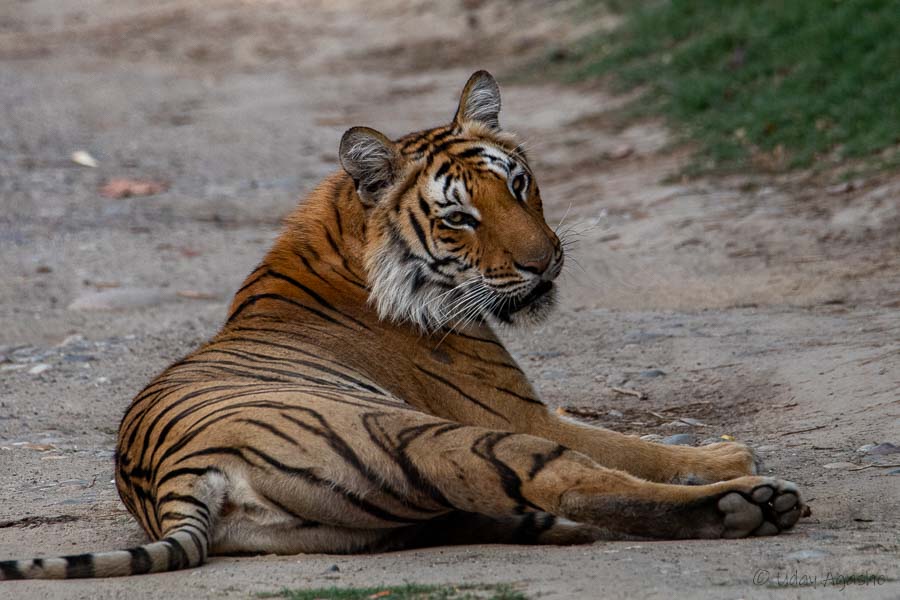
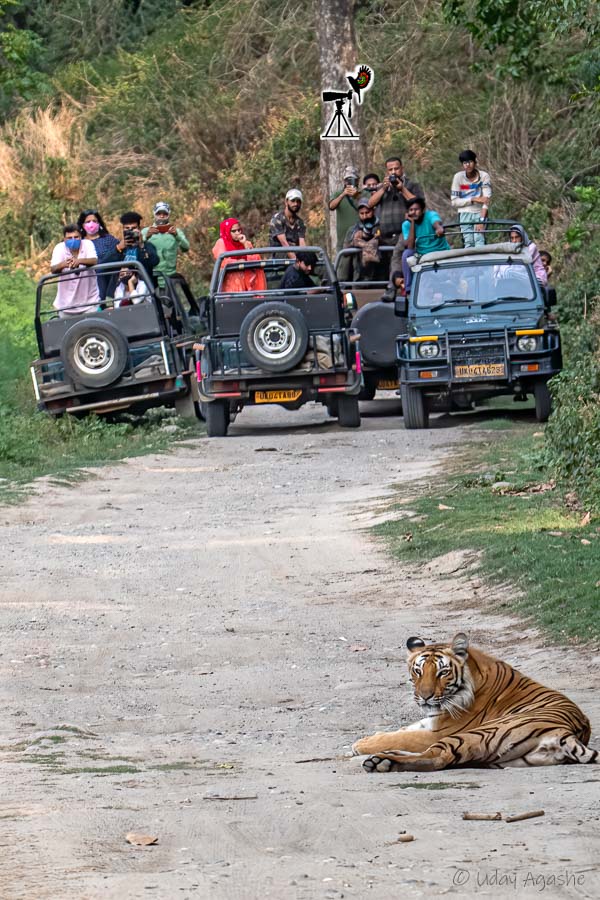
We then heard some noises at the back (we were on the edge of the valley), it was a commotion of a small herd of wild elephants crossing the river. That turned out to be a lucky break for us. Because of their presence, the tigress got alert and she walked over looking for any signs of danger (it is typically seen that the tigers and elephants are well aware of each-others powers and they try to avoid direct contact as much as possible… they will avoid crossing the paths).
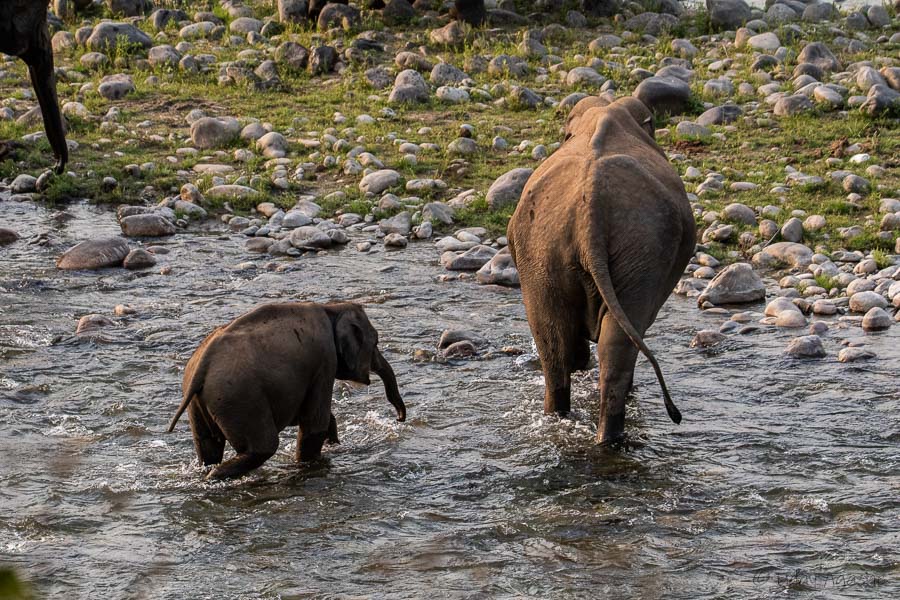
Elephants
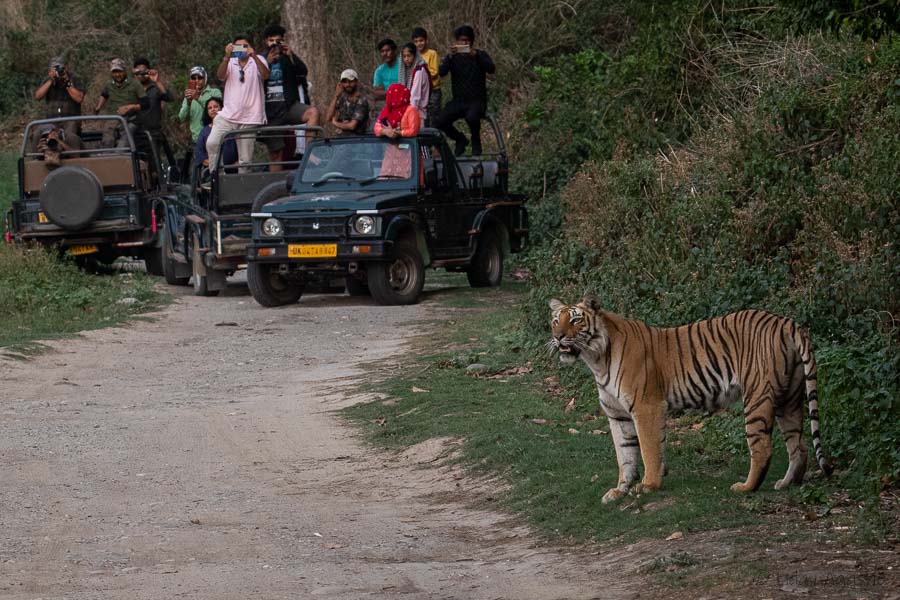
Alert Tigress
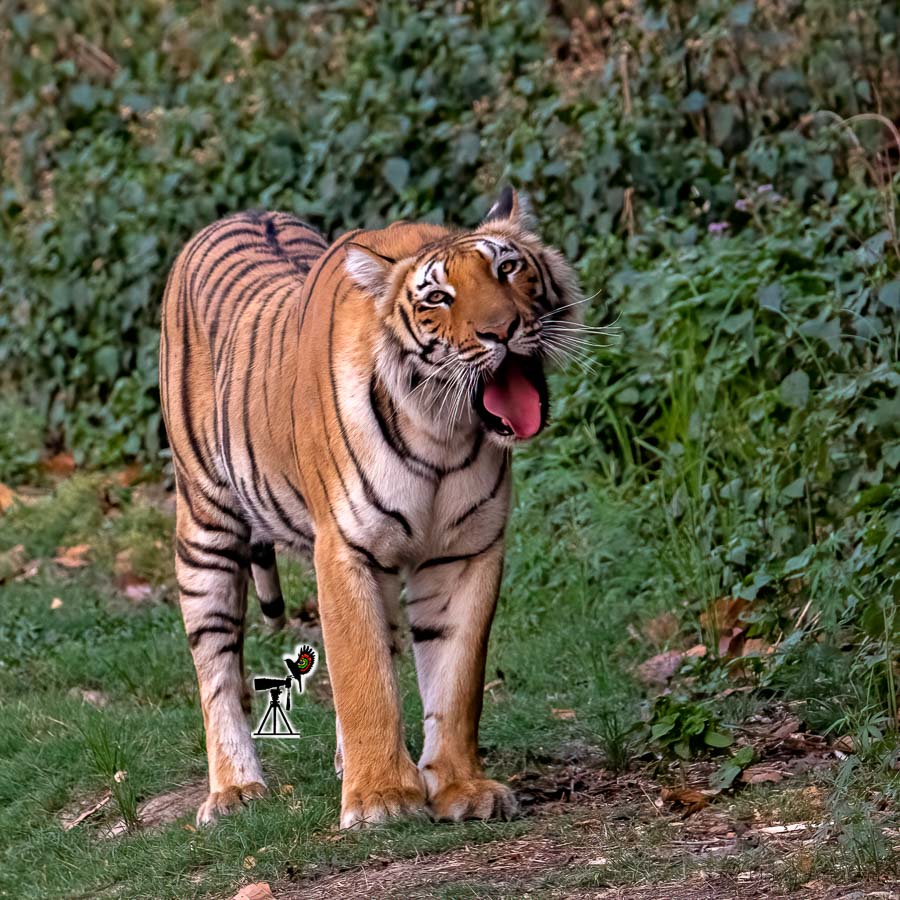
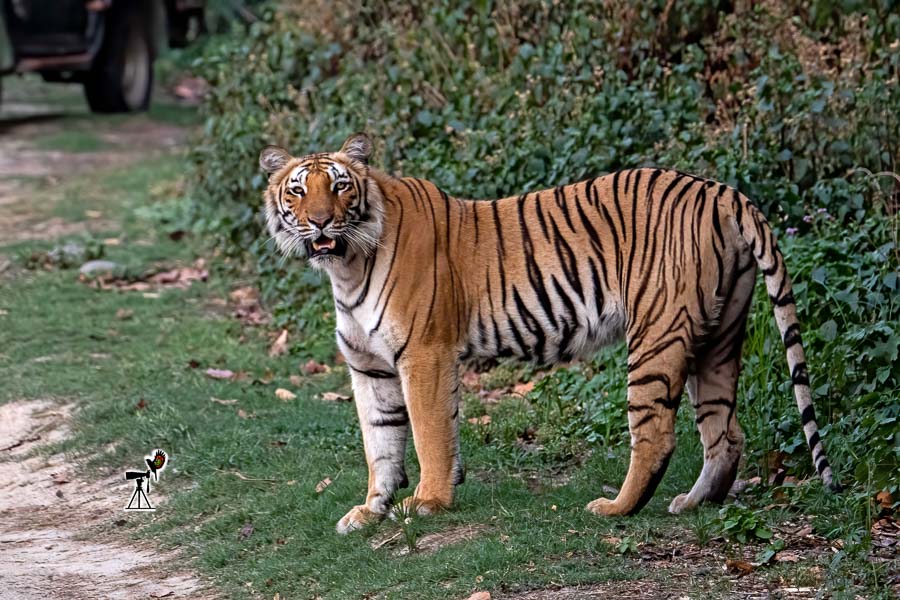
For the next half hour, she kept changing places and then finally decided to walk down towards the river. On the way, she passed thru small bushes full of Bhang (Cannabis indica) vegetation. On the way she did stop and chewed a few leaves too!
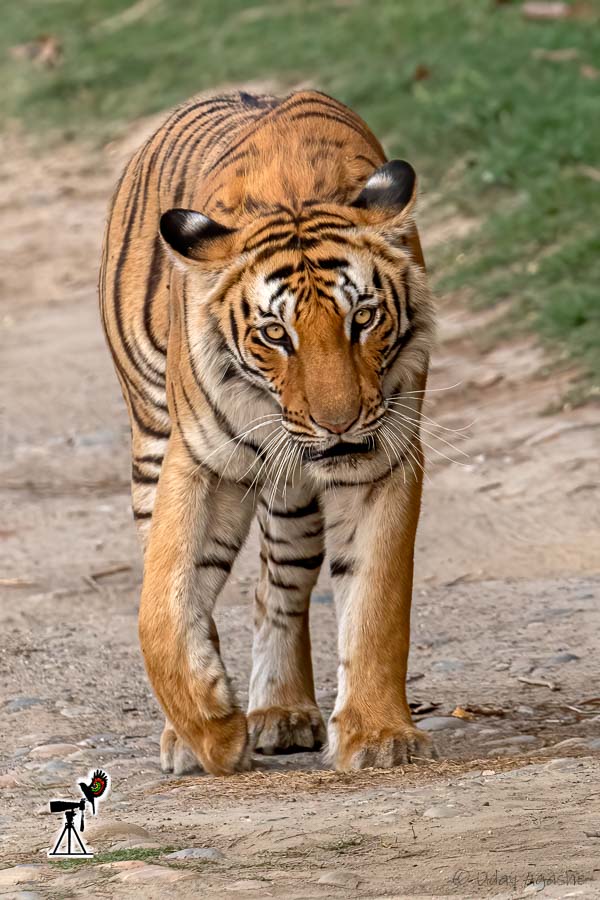

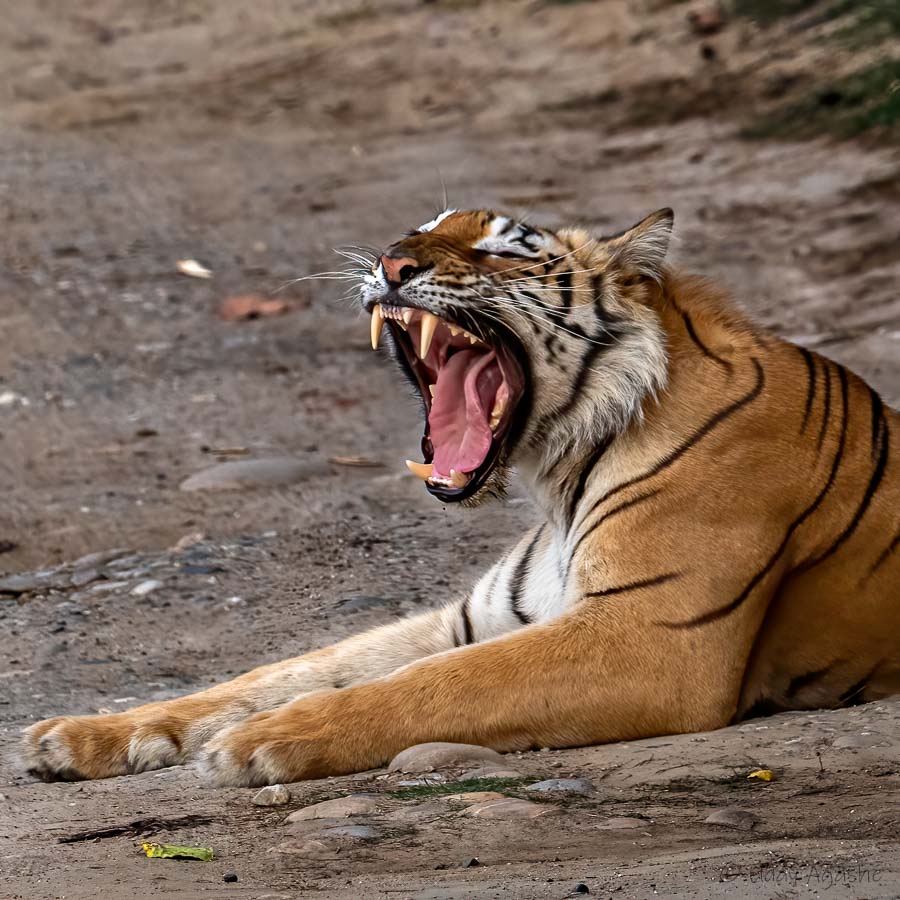
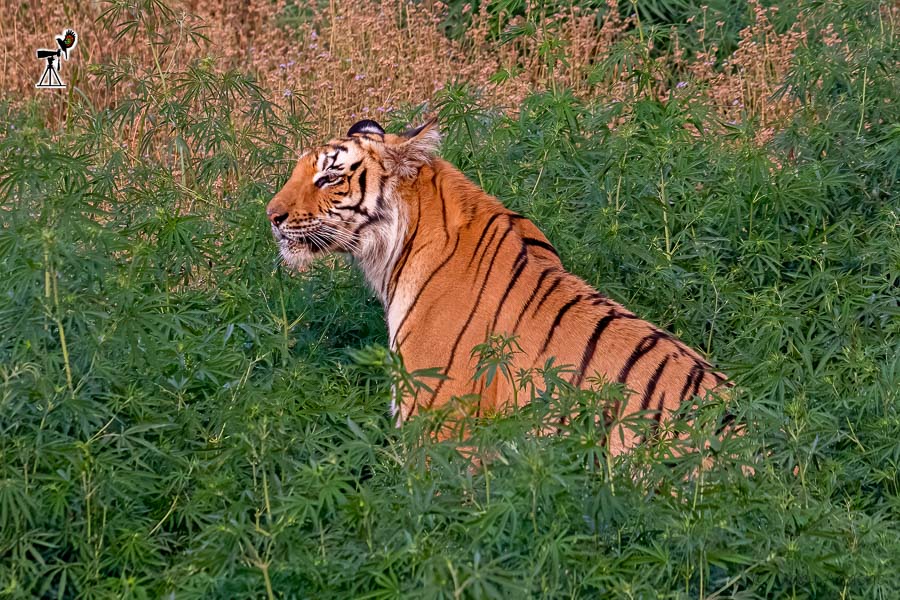
in Bhang plants
By then it was getting darker but we still decided to have another round of the grassland. The first thing that attracted us was the presence of a Paradise flycatcher. Little later, we found ourselves just in time to get a glimpse of another tiger-cub walking in the grass away from us.
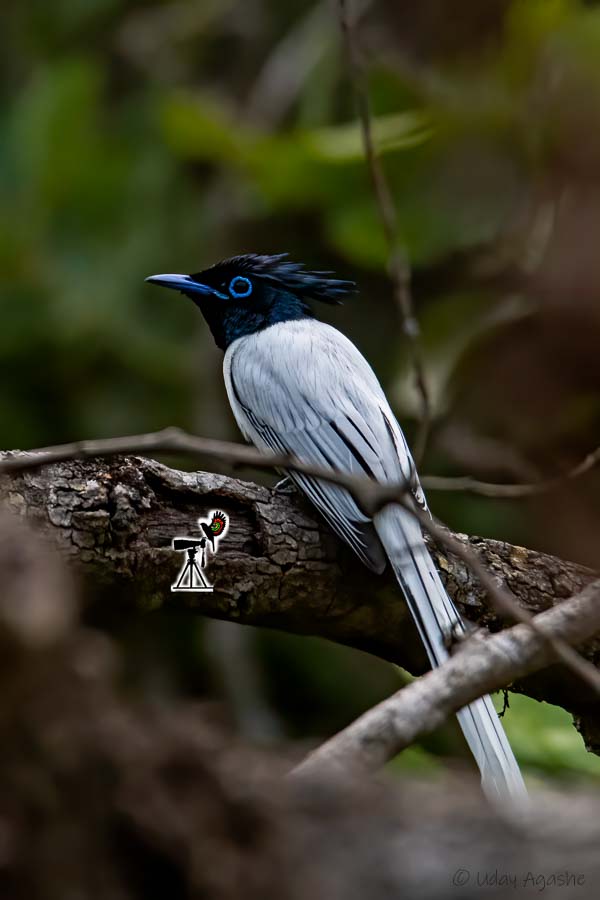
Indian Paradise Flycatcher
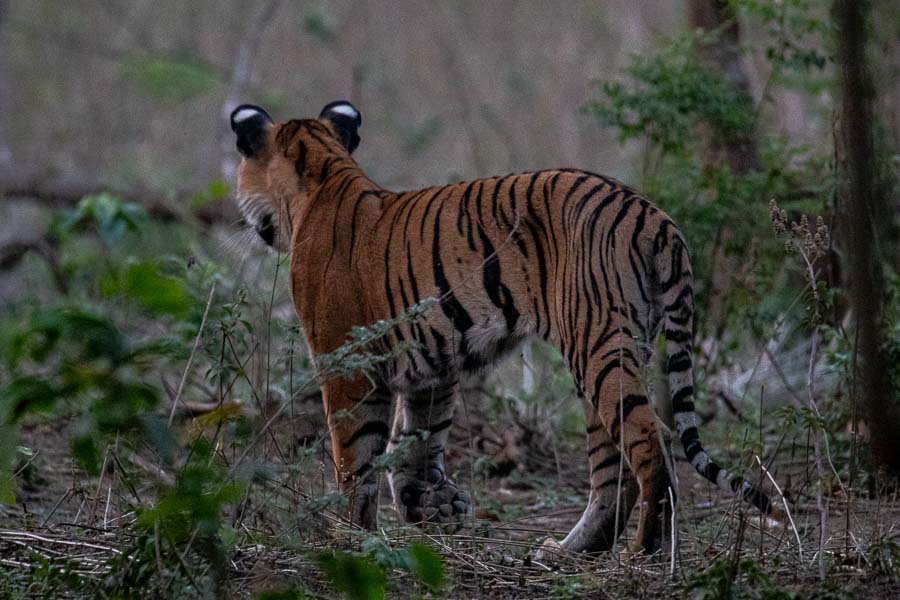
That marked the end of our first safari in Corbett and we returned to the rest-house with lots of good photos (and many memorable moments). With that, the tea/snacks tasted extra sweet 😜.
Dinner at 8 and then lights-off before 10 pm.
May 3, 2021
The alarm was for 5 am and we were ready at the canteen for tea by 5:30. Within 15 minutes we were on the road.
Our resourceful drivers had got some info about yesterday’s late evening tiger-cubs. There was a possibility of seeing them going from a small water pool towards the denser jungle, so we immediately went towards the grassland patch and stay put at one place on the road (obviously there were other gypsys also present, each one having own assumptions about where the cubs would appear and hence taking their best positions accordingly (in a normal scenario, when there are 20+ vehicles, there is hardly any choice, you stand where there is some space, that’s all!!
The expectations were built and were fulfilled within the next few minutes as one by one the 3 tigers came out from the grass patch. Although not the regular load, there were still about 7 gypsys in the waiting and that meant some hurdle for the cubs while crossing the road. Today they decided to take a longer route, thereby crossing 2 different roads and thus giving us better chances to observe/capture them.
It took them just 14 minutes to reach their destination inside a denser jungle but that gave us ample time although the light was still low.

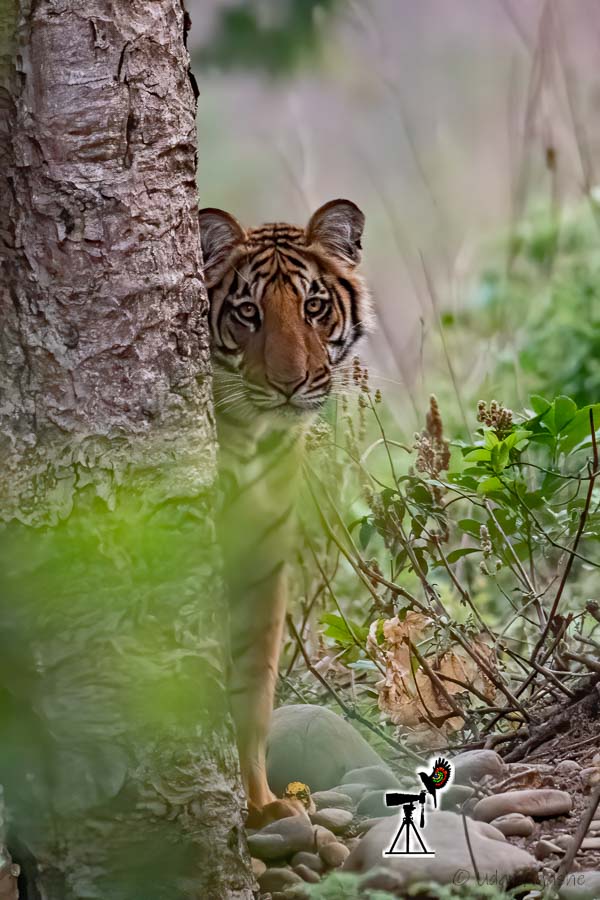

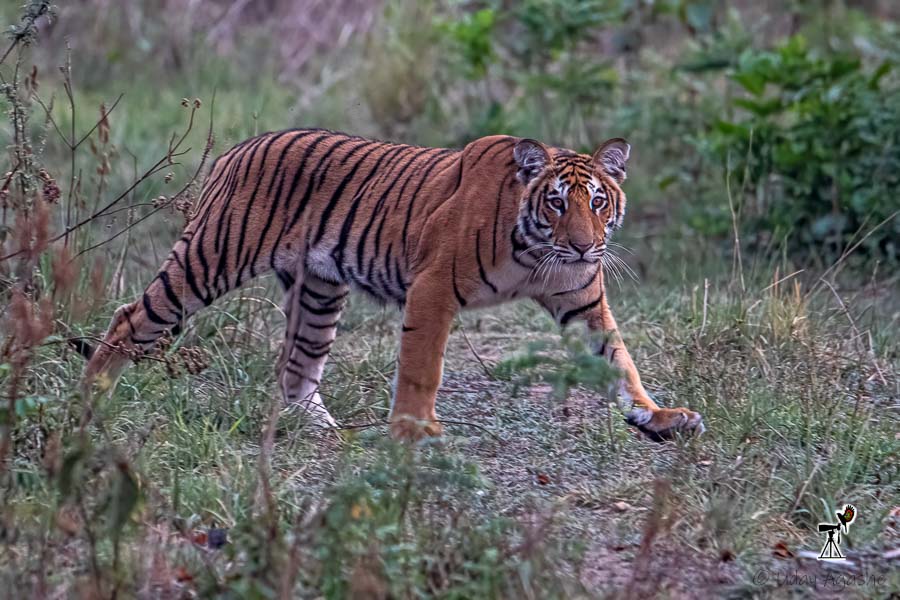
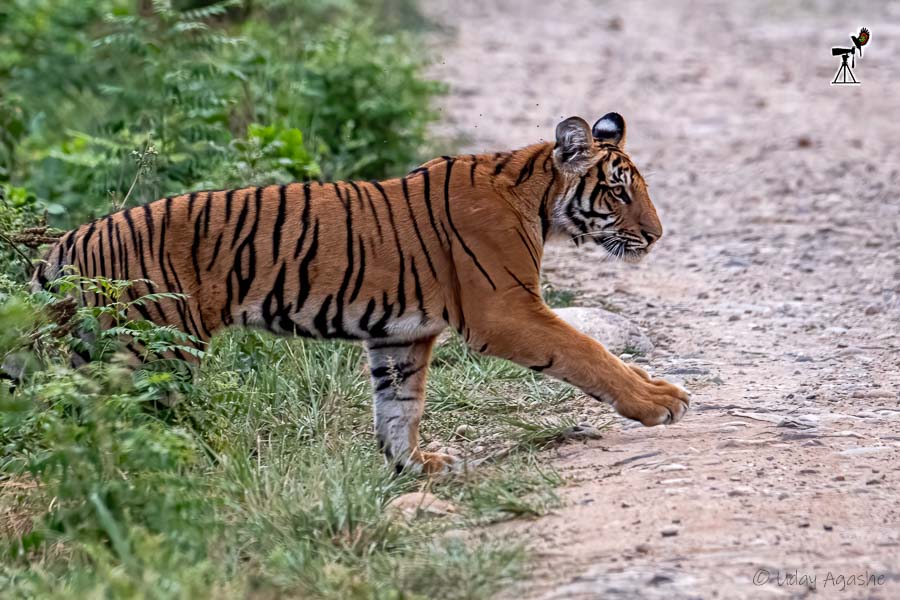
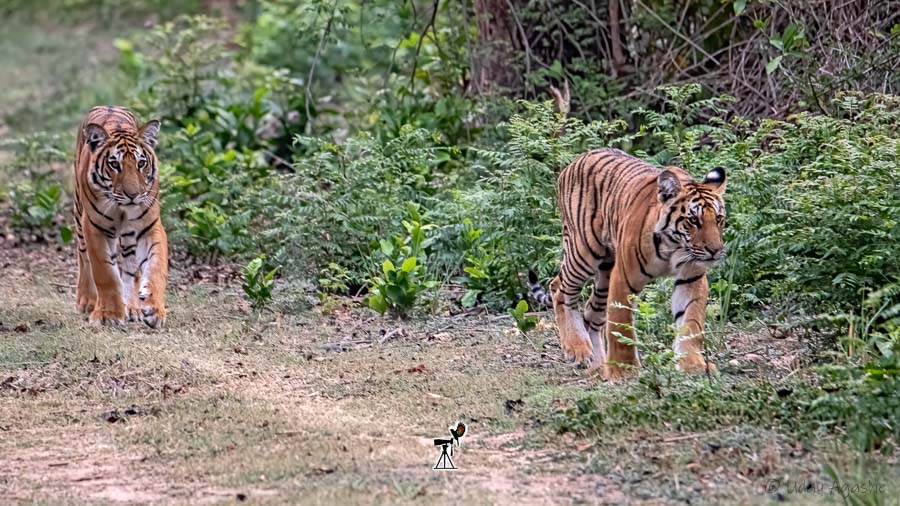
With that lovely beginning, we went towards the water body for the elephants. On the way, we saw a crested hawk-eagle, a peacock, an Indian Paradise flycatcher, red junglefowl, and a warbler. But most of our time was with the elephants.

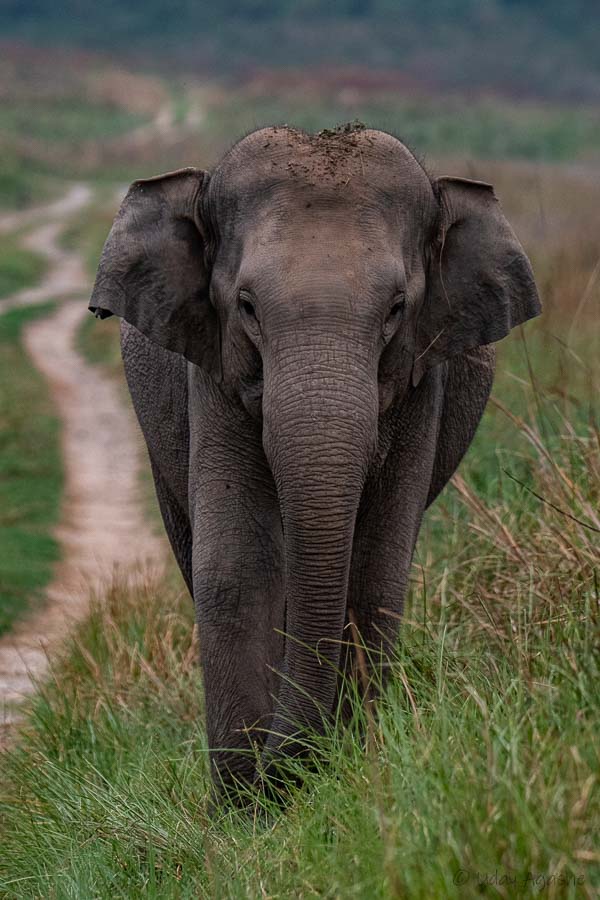


After spending about an hour there, we once again decided to go to the Sambar road. We spent a few minutes at the same spot as yesterday. The forest officer there told us that the tigress has just passed thru the waters and was camping somewhere on the opposite bank.
We waited there for 15-20 minutes but there were no signs of the tigress. While waiting we saw the Lesser fish eagle, a river lapwing, and a black-shouldered kite. There was one leafless tree on the opposite bank that was full of common birds like myna.
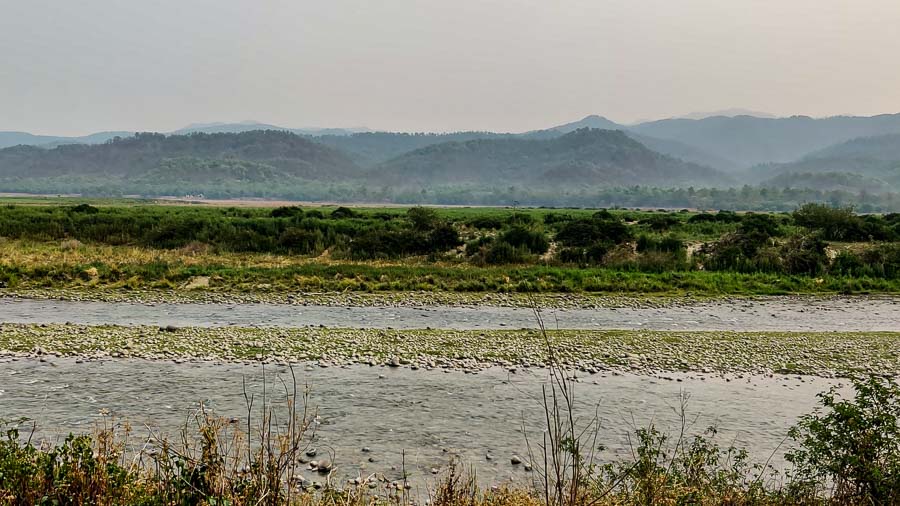
Sambar road - river bed
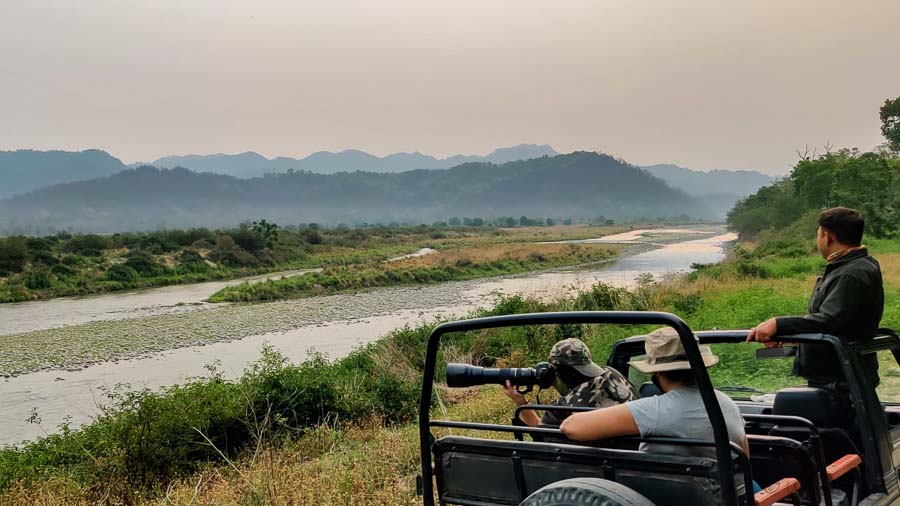
Sambar road - river bed
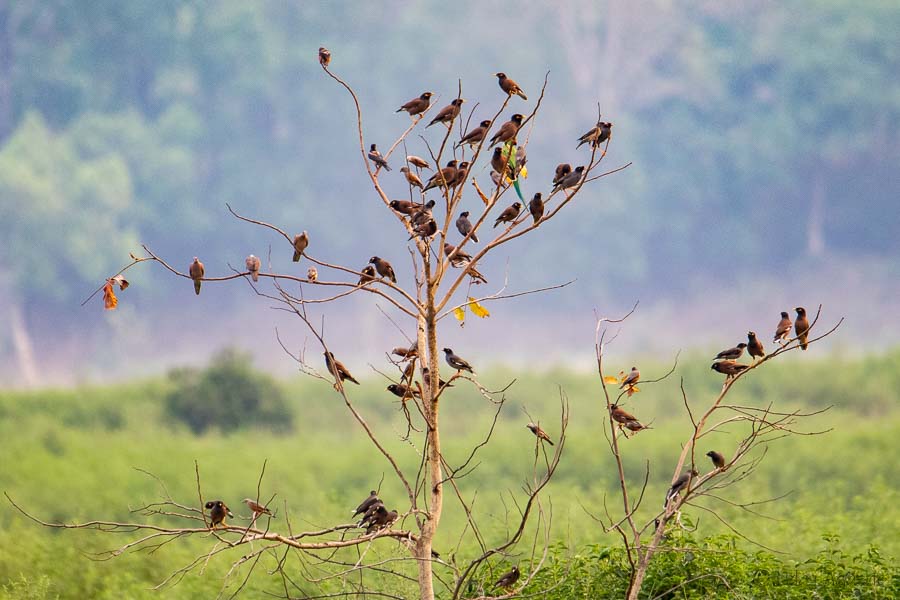

Lesser Fish-eagle
Now the choice ahead of us was to continue waiting for the tigress or go to a different part of the jungle that our driver was suggesting. We had already seen tigers earlier so we decided to see the jungle. Our other gypsy decided to wait there and they got yet another tigress darshan
The place we went to was apparently known as a swimming pool of the Paarwali tigress. It was a natural pond near the river stream. We crossed the river on a wooden bridge (that gets constructed/repaired every year after rain). There were no signs of any tiger there and there were no safari vehicles in this part either.
On the way, we could see a nicely perched Chestnut-headed bee-eater & grey-headed woodpecker. One of the trees on that path was full of beehives.
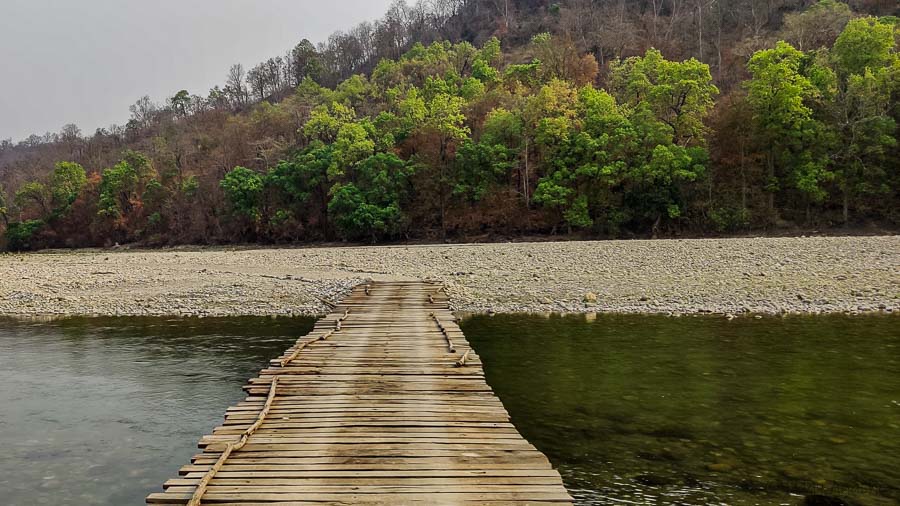
Wooden Bridge
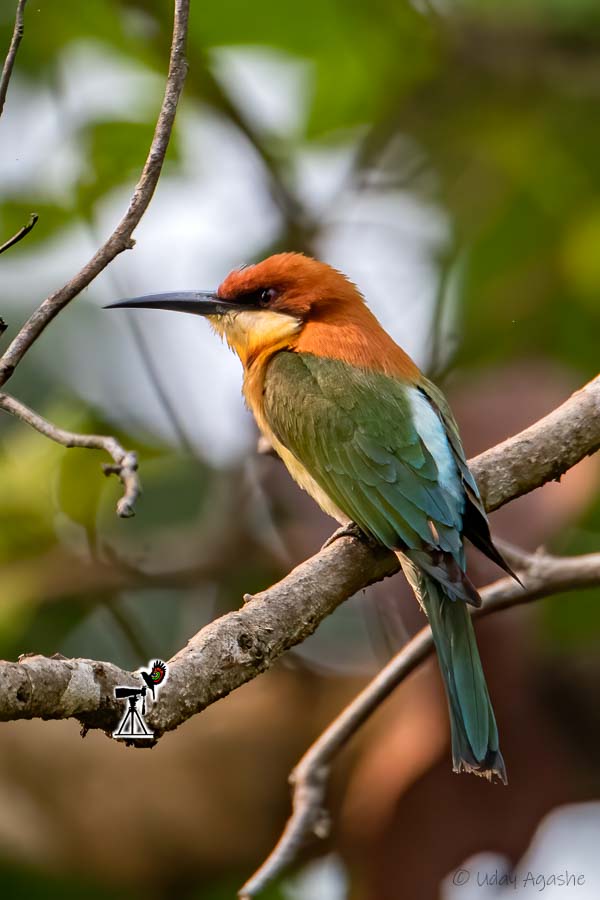
Chestnut-headed bee-eater

Bee- hives
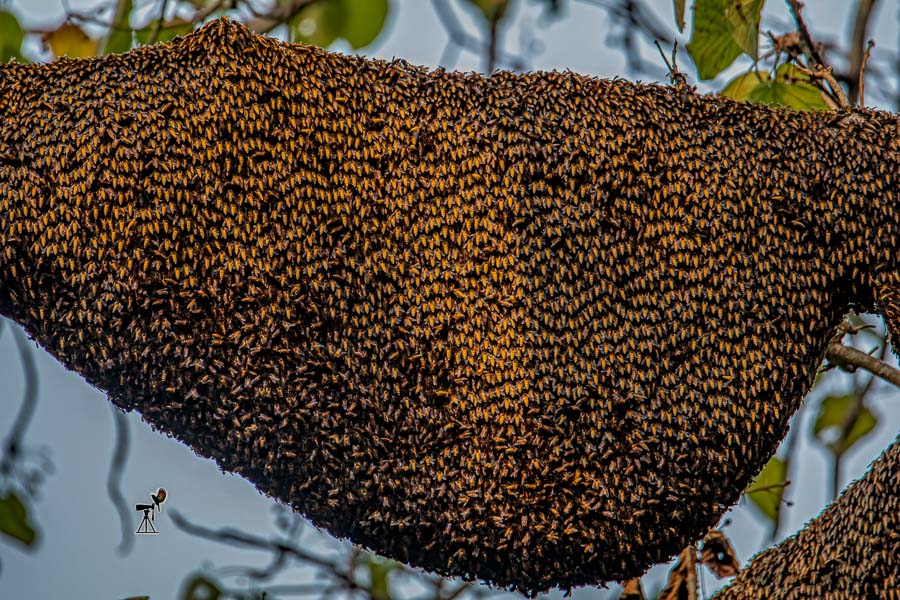
Hive closeup
On the way back, we saw a pair of Himalayan bulbuls, and then a little further, 2 jackals (maybe a pair) came head-on from the opposite side of the road. They saw our gypsy but did not run away, they just changed path, got into side-bushes to avoid us and after crossing us, came back on the road.
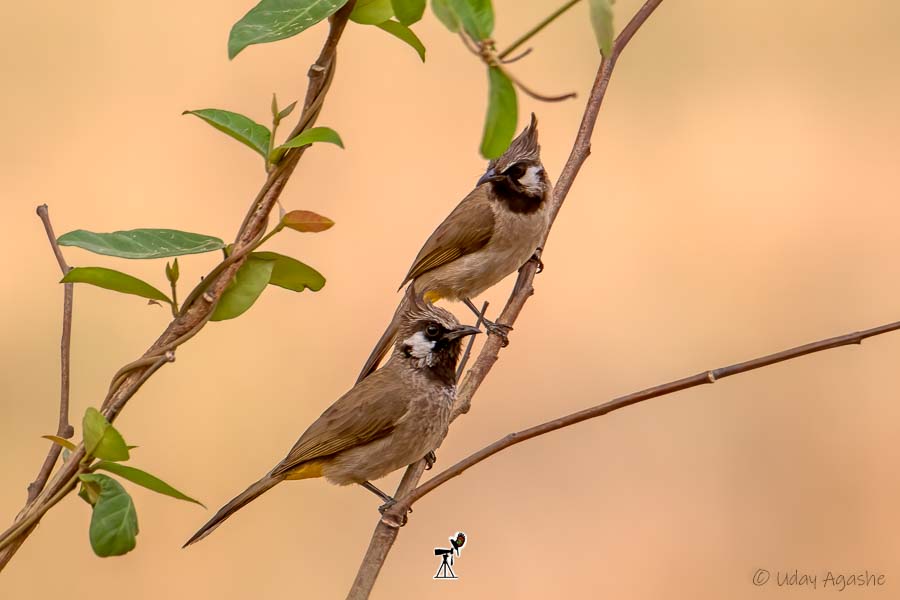
Himalayan Bulbuls
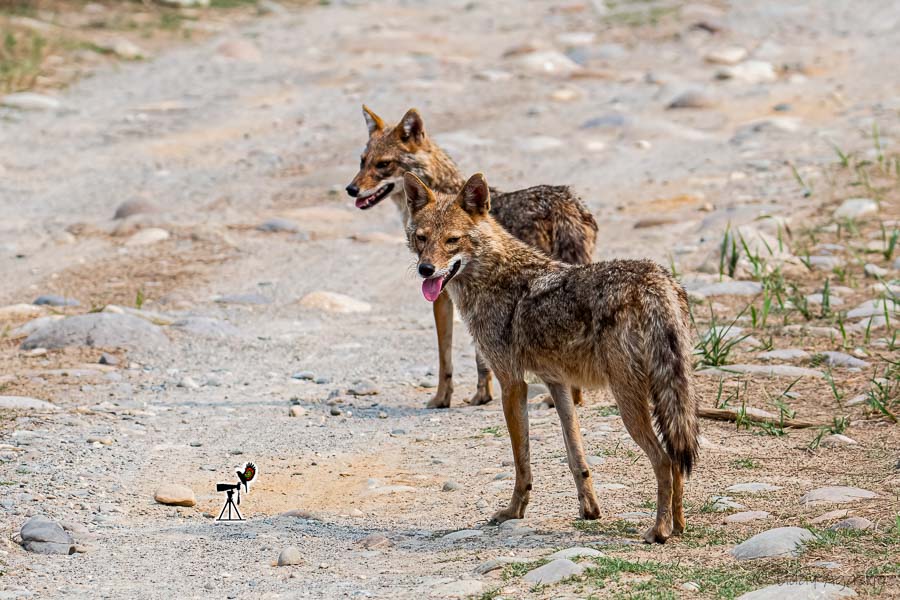
Jackals
9:45 was our scheduled safari closing time and we reached back well in time (to hear the stories of how close the tigress was to our other gypsy). After breakfast, as we were walking back to our dormitory, we saw a group of monkeys playing nearby. That group included a tiny baby that caught our immediate attention (looked very fragile, at times it was losing balance while walking).
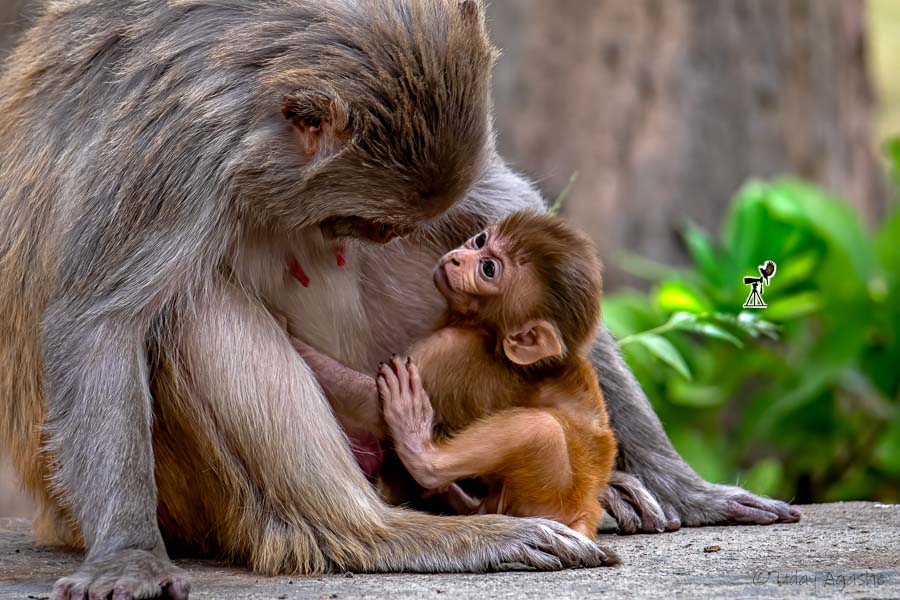

Between lunch & evening safari, we thought of exploring some areas within the rest-house campus. Walking in that heat was a little tiring but we got to see the Dollar bird, Lineated Barbet, rose finches, and a few doves.
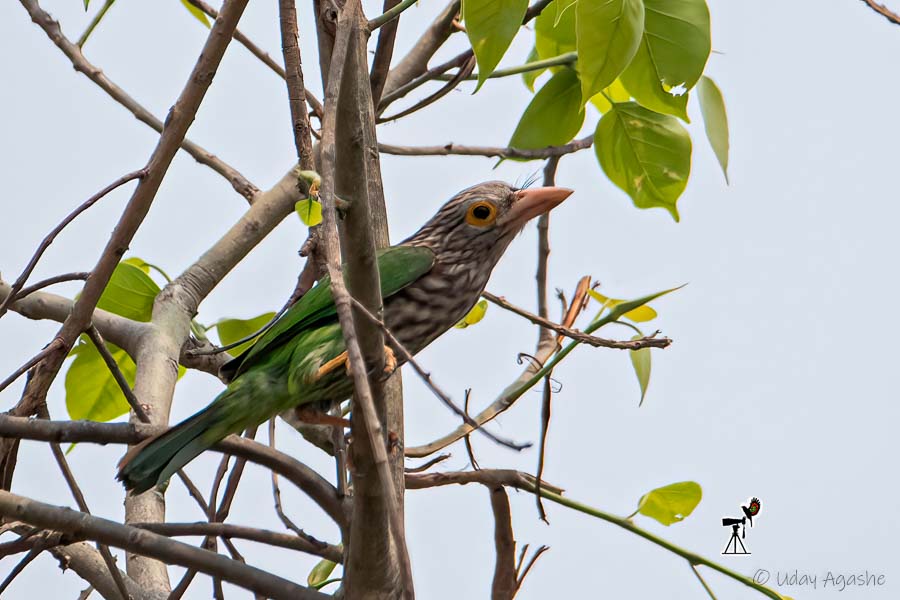
Lineated Barbet
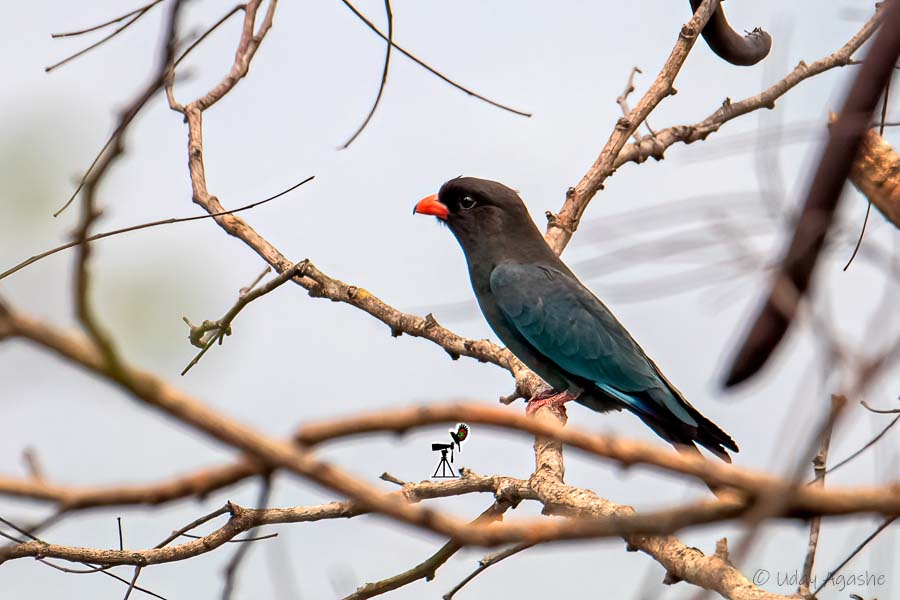
Oriental Dollarbird
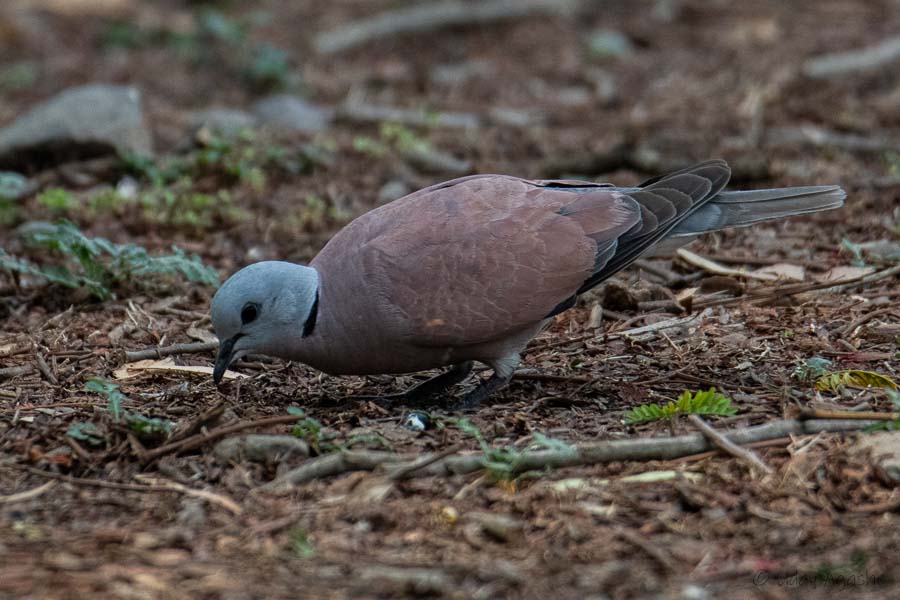
Red Collared Dove
In the afternoon, we went again towards the grassland part. Here we saw a tree with a huge base, unfortunately, a couple of years back it got struck by a lightning and got destroyed. From here, we had a quick round of the sambar road and actually saw a sambar standing between the river streams. As we were watching the sambar, a big kingfisher flew over us, it was the crested kingfisher.

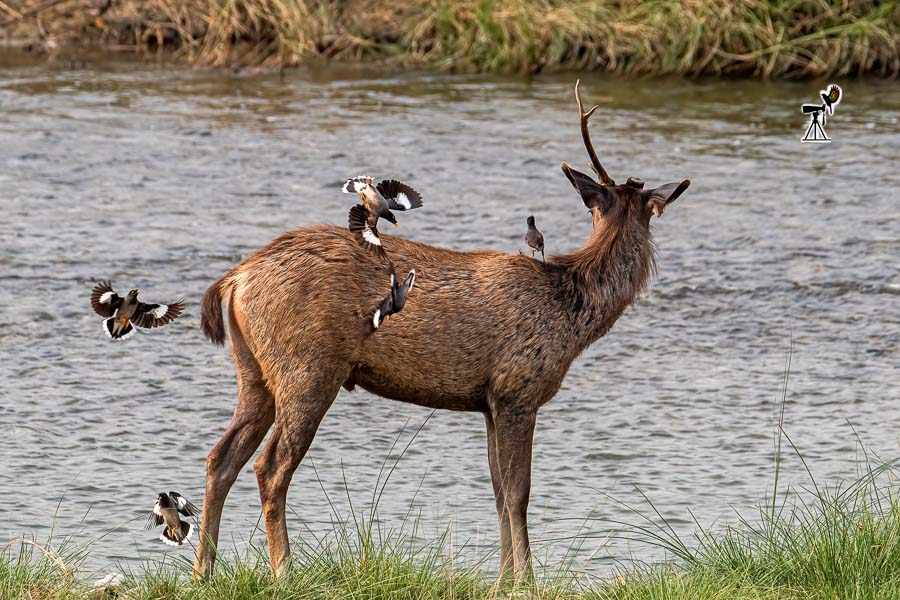
Sambar deer
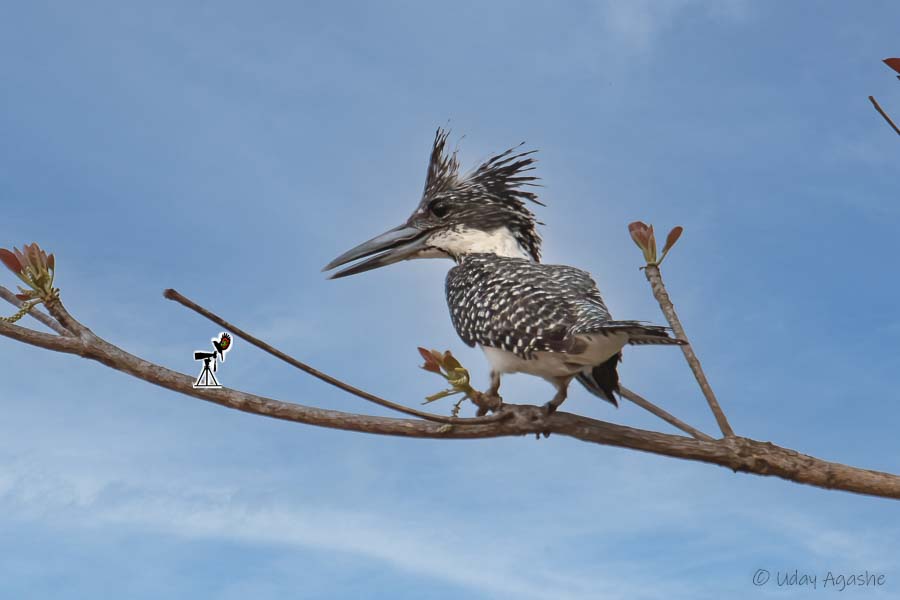
Crested kingfisher
Yesterday we had seen the tiger going into the Bhang fields, today it was the turn of the elephant. From there it went into the stream and while walking thru the waters, kept drinking it as well.
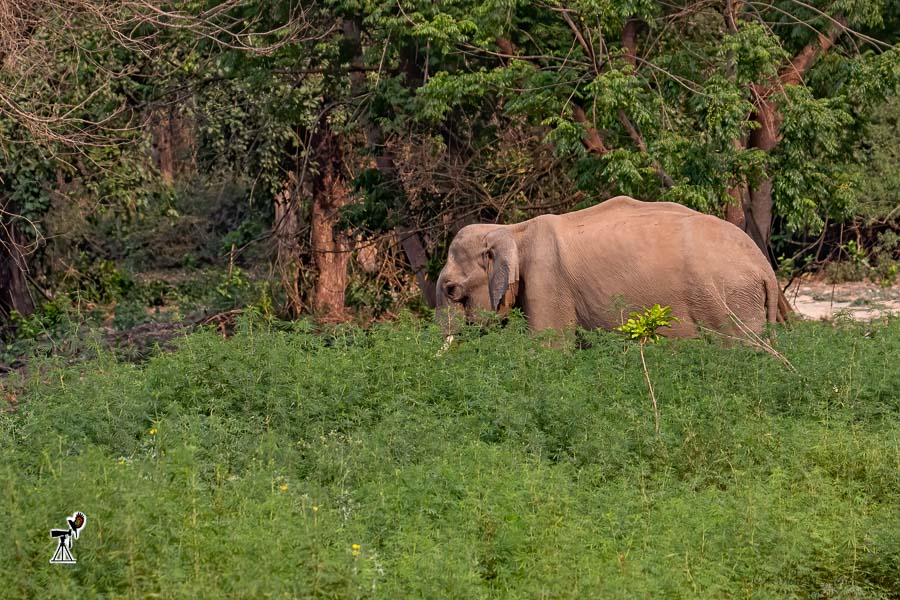
We once again went to the temporary bridge area. Here at the pond, we saw a pair of Indian Paradise Flycatchers enjoying the pool (they kept diving in the waters and then cleaned up the feathers). The pond was also visited by red junglefowl and white-throated kingfisher.

Gypsy on wooden bridge
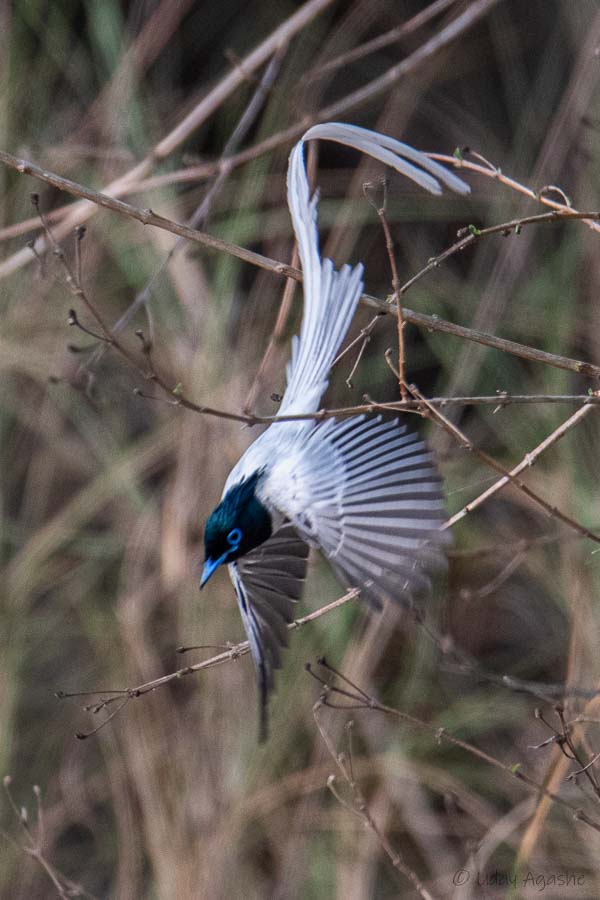
Indian Paradise Flycatcher
On the way back, we passed thru another guest-house in the jungle. This recently came into the limelight as Indian Prime Minister Modiji had stayed here for the Bear Gryll’s show. While waiting here for the bio-break, we could see some bird activity. We quickly turned cameras into that direction to see the Drongo Cuckoo, a pair of large-billed crows, and a mating pair of spotted doves.
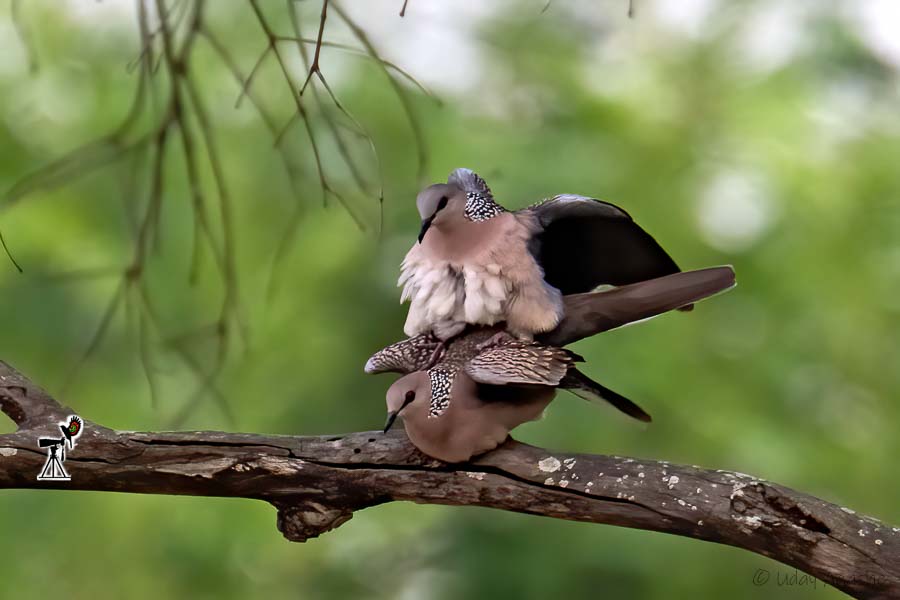
Pair of spotted dove
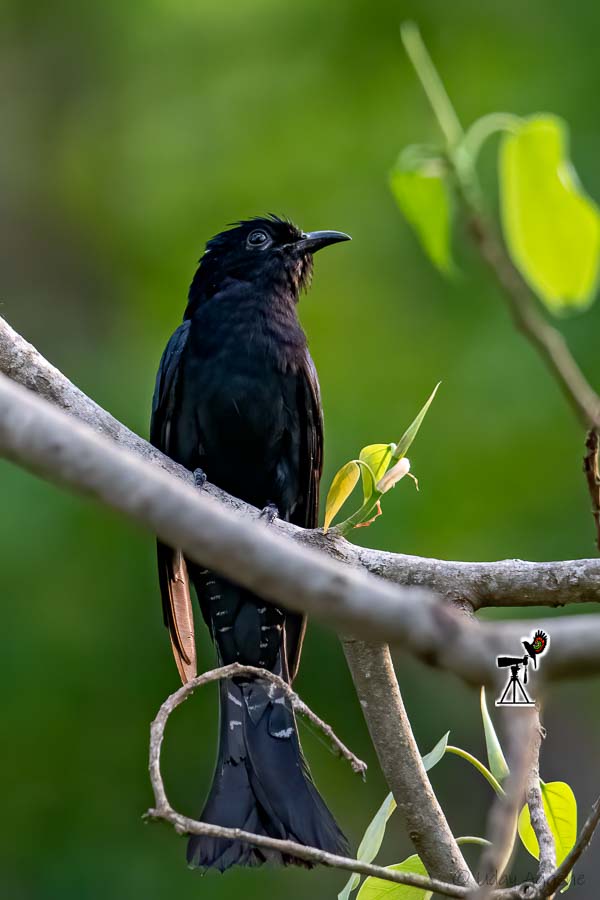
Drongo Cuckoo
From here we took another route to get back to the grassland. This was thru the high mountains and much denser Saal forest (Specialty of the Saal forest is, it is evergreen. Unlike the deciduous Teakwood plants). Just near our rest-house, we saw a lot of blue-tailed bee-eaters (possibly returning for roosting in that area). One small herd of elephants was also seen nearby.
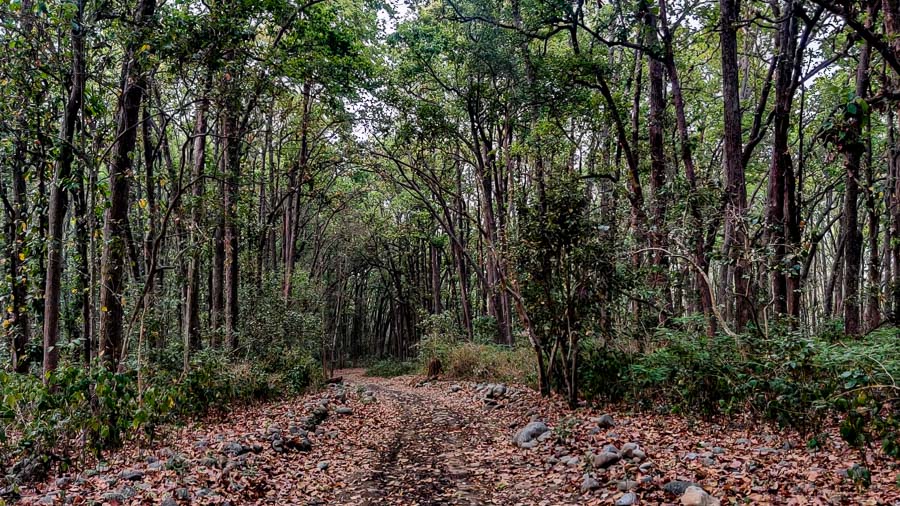
Sal Jungle
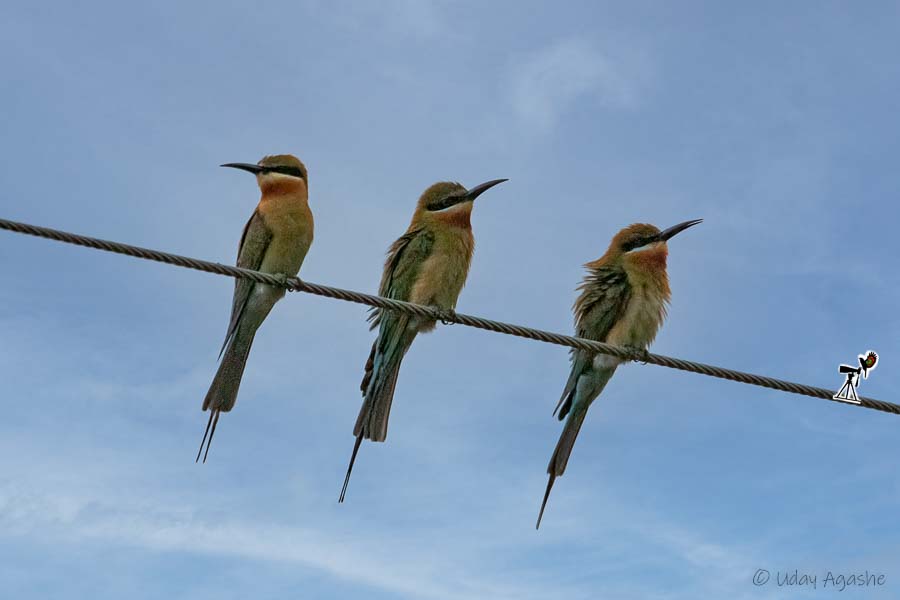
Blue-tailed Bee-eaters
Although we did not see any tigers during this evening safari, it was special because of the different patches of jungle that we could see.
While photography in general (and tigers in particular) is important, it is equally essential to enjoy the jungle as it is. Not just the visual aspects, but even the sounds can be enjoyed. The bird songs, the rustle of dry leaves, sounds of wind blowing, occasional warning calls from monkeys or deer, a stray call from elephants, and on top of that the silence too!!
As we reached the rest-house, we started enquiring about the status of tomorrow morning. We were allowed 2 nights' stay, so tonight is fine. But does that mean we have to move out of the jungle early morning or can we do another safari in the morning before starting back?
By dinner time, our drivers gave the good news that the forest department is allowing us the morning safari but we had to get back by about 9 am and start our return journey latest by 10 am. As the parks were closing for an indefinite period, even the skeletal staff would be going home along with us in the morning.
So we are going to get another safari tomorrow 😜 😜!!
May 4, 2021
We had kept our bags packed in the night itself. In the morning, we just got up and quickly got into the gypsy for the last round of the Dhikala forest.
This time, we went again to the grassland side but went a little further than earlier and reached a spot slightly on a height with a bird’s eye view of the vast tract of grassland below.
On the way, we saw a little strange arrangement of dried trees in the otherwise green patch of land. Once again, the reason was a lightning strike that fell on this section of trees burning them badly.
The grassland area was huge. One section of it was occupied by elephants and in another part, a big herd of spotted deer was grazing at leisure. On close inspection, we even found a group of wild boars nearby.
On the way back, we saw another group of wild elephants crossing the road ahead of us.
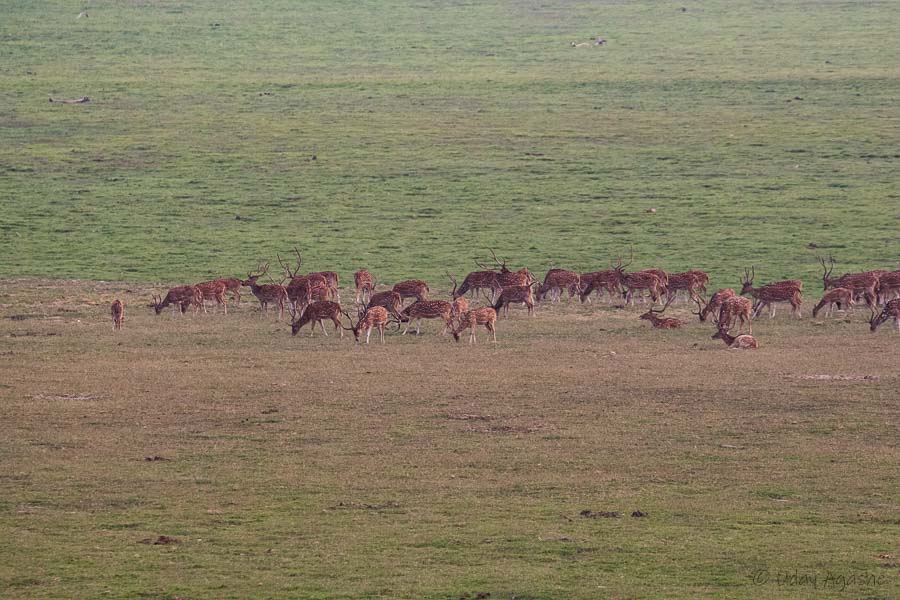
Spotted Deer

Elephants
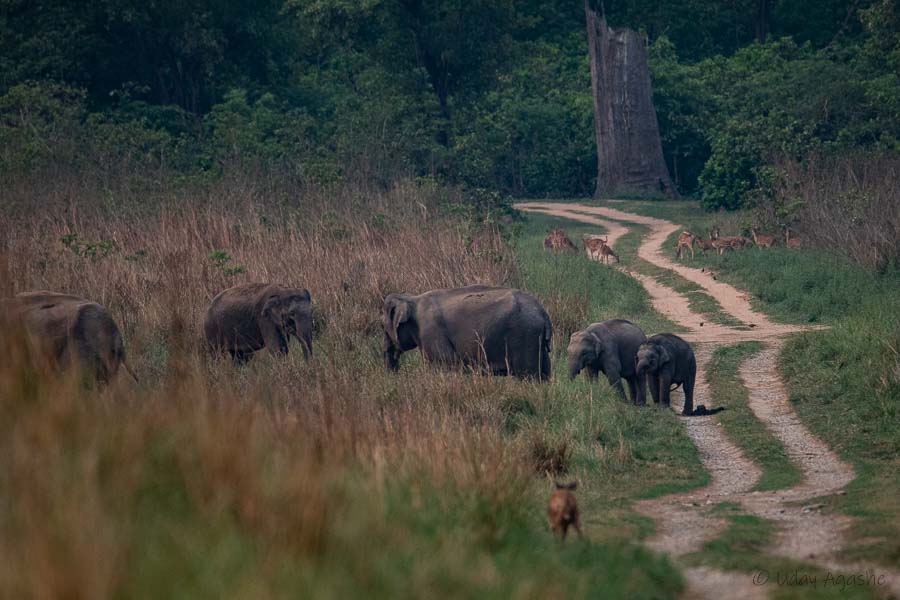
Deer & Elephant together
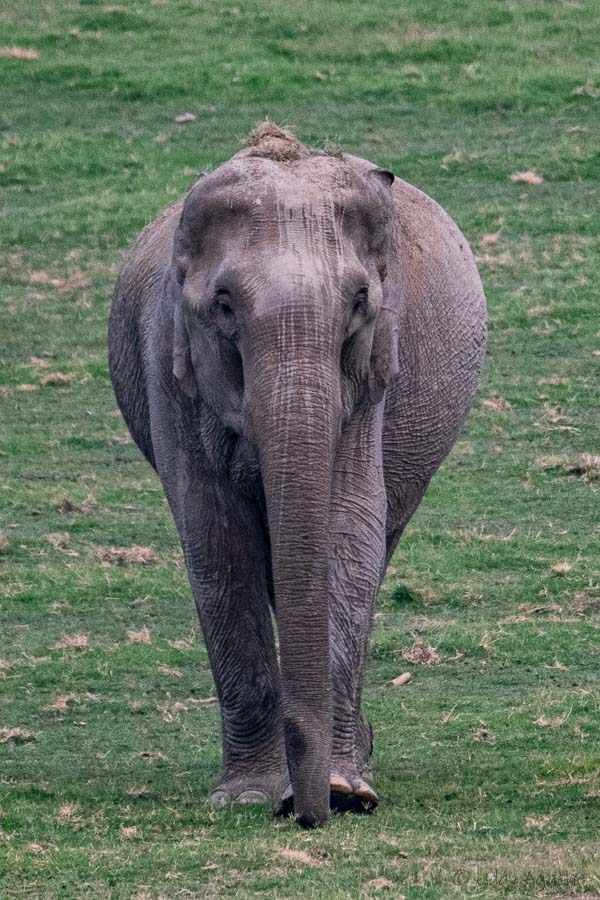

It was about 7:30 and we had another hour and a half to explore. We decided to go to the Sambar road once again, which turned out to be a very good decision.
Little ahead of our regular spot, we could see 3 gypsys waiting at the edge of the cliff. They were waving at us from distance. Quickly we went near them to explore and to our surprise, the two sub-adult tigresses (daughters of Paarwali) were relaxing in the river bed below. This portion of the river bed was dry but had shallow waters on both sides.
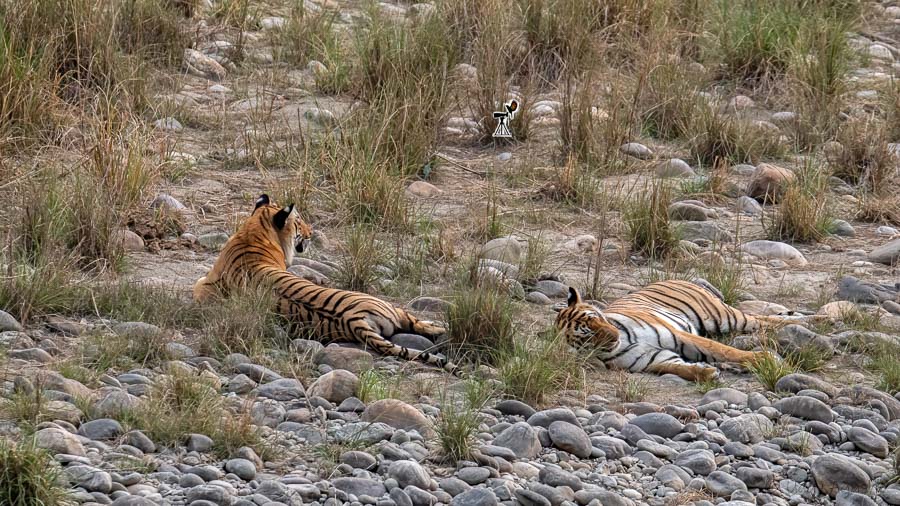
With that sight, there was no question of going anywhere else. We would wait here till the end of our safari time (in the hope that the tigers would wake up and make some movement). We did some back-of-the-mind calculations and planned to wait even till 9:30 am… worst case, we can skip breakfast and start immediately on reaching the rest-house (anything for the tigers 😜).
But we did not have to wait for long. In the next 1 hour, both the tigers made a lot of movement and allowed us some nice photos in the process. At one time, there was a small herd of elephants not very far from the tigers and I could even catch both in a single frame.
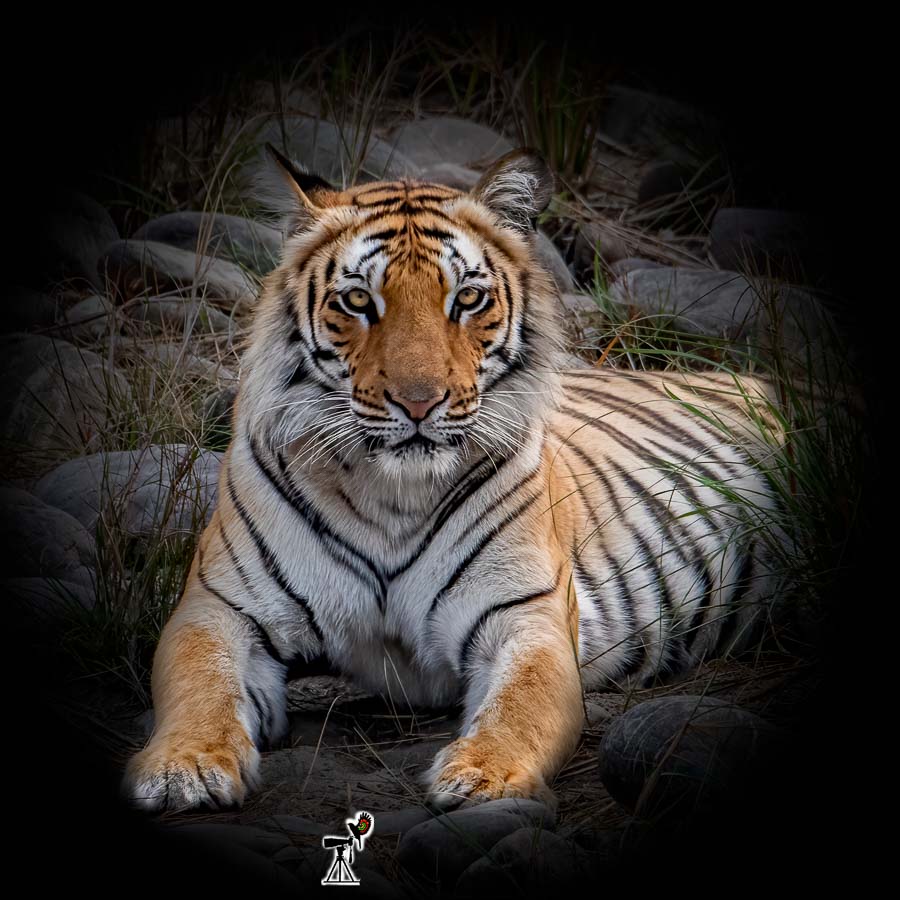
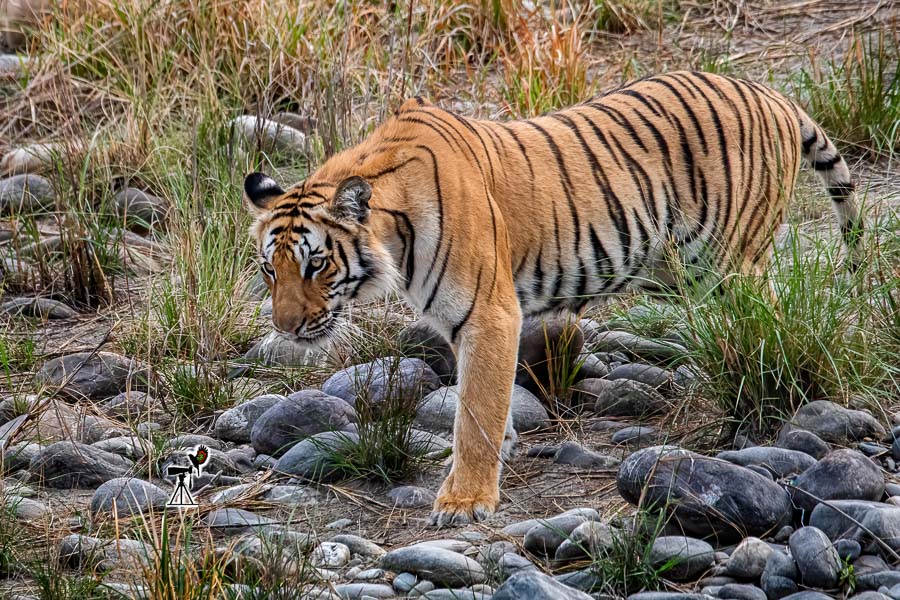
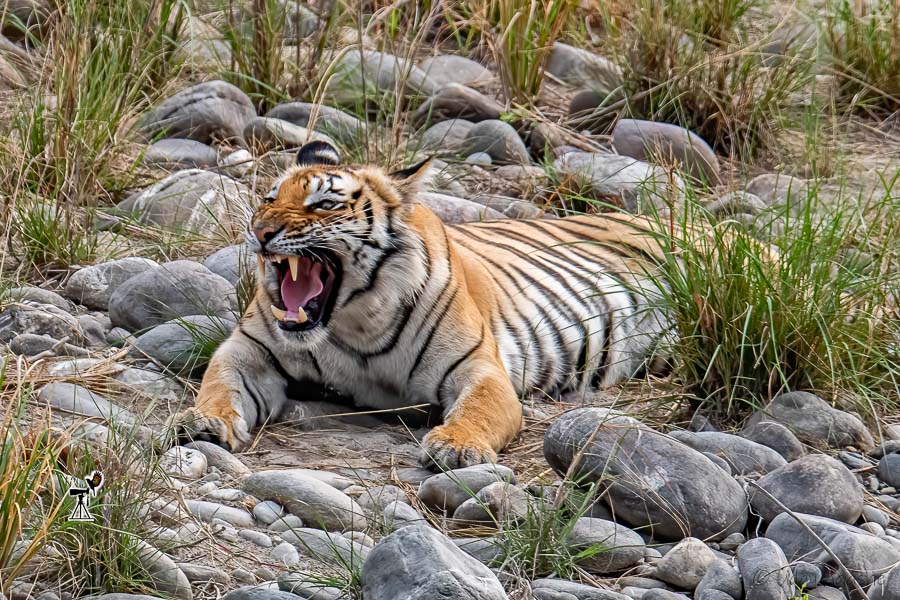
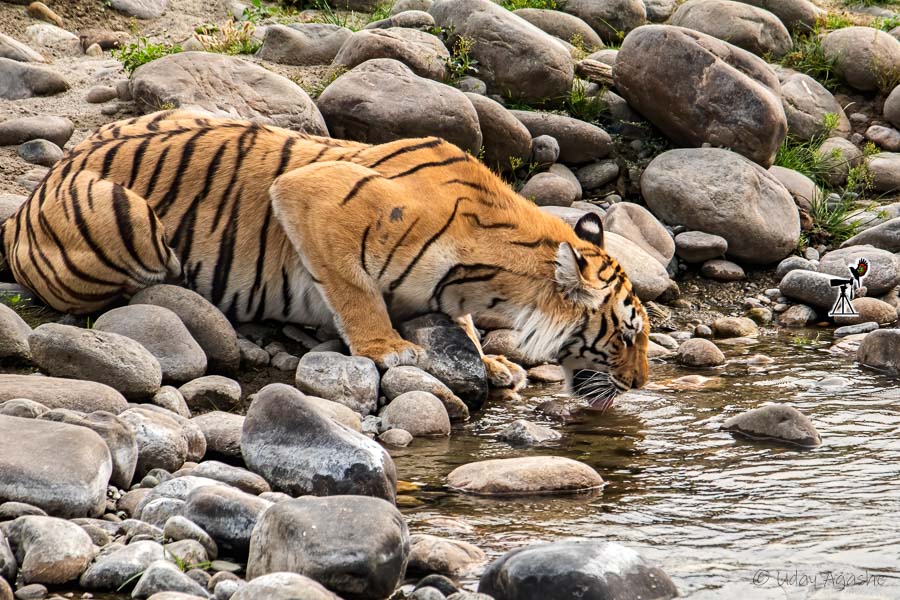
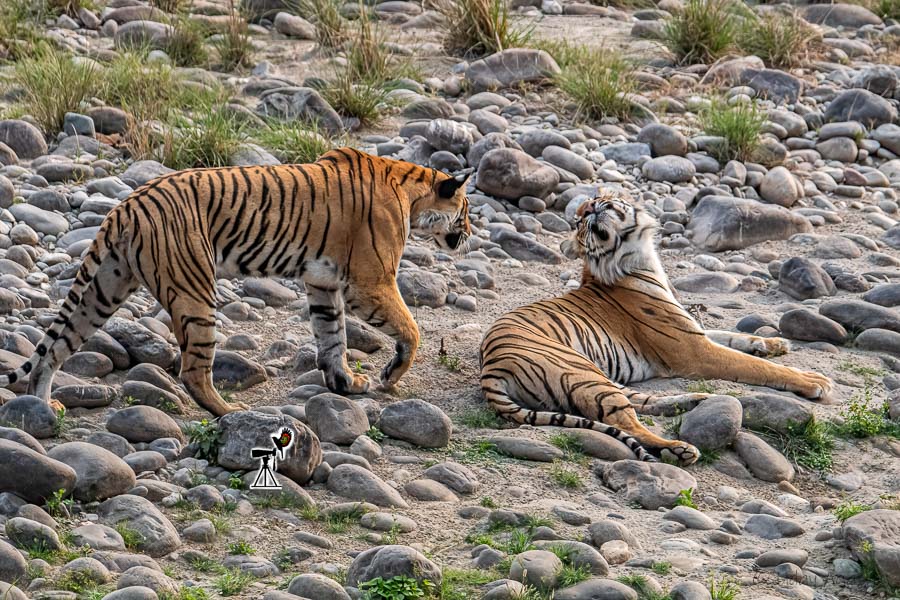
Siblings
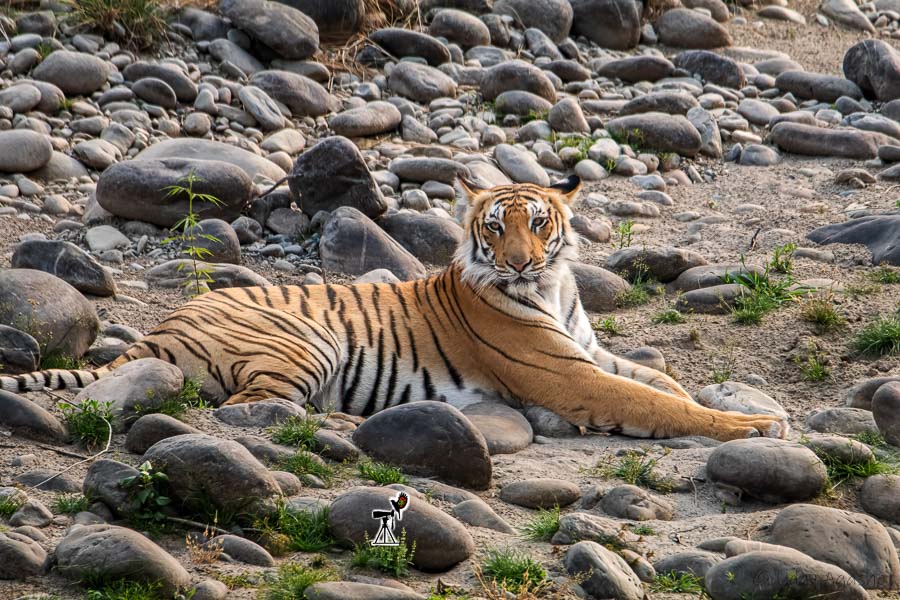

Tigers & Elephants
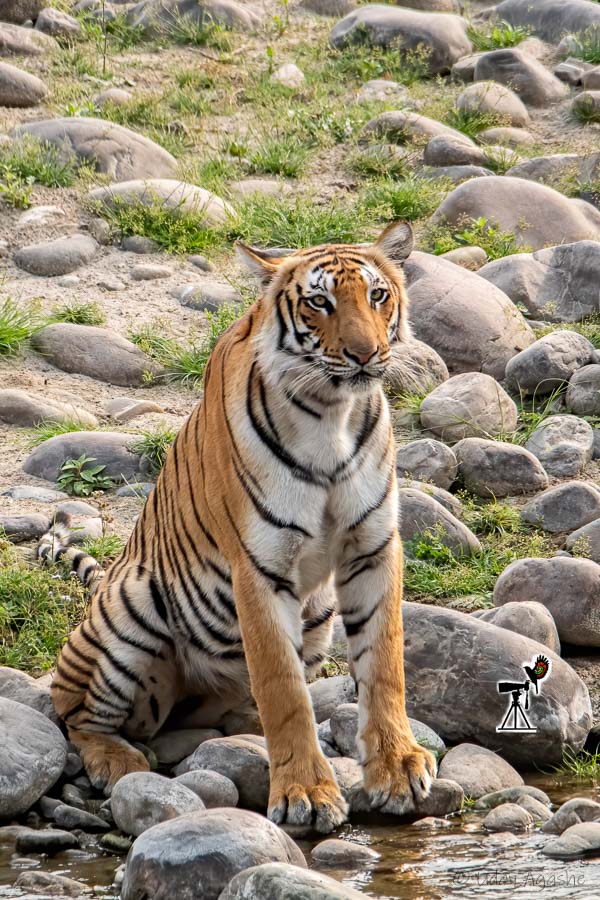

One by one both of them disappeared onto the other side of the river bank and we decided to move out. All 7 gypsys were at the site and all of us must have managed to get decent photos.
As we started from there, one other drama unfolded. There were 3 gypsys ahead of us and suddenly, the one ahead of us started reversing. Apparently, one elephant was aggressively charging on the road and hence everyone started to move back. After 5 minutes, the elephant calmed down and moved away from the road. As it moved towards the woods, we went ahead one by one. But it did not stop there.
As the elephant saw the gypsys moving, it again decided to charge, scaring the hell out of the last 2 gypsy-inhabitants. One of them was our other gypsys so even we were worried till we saw them coming at express speed. The elephant was really in an agitated mood (some gypsy may have troubled it in the past and it probably remembered the incidence). Thankfully all of us were saved from the fury.
We still had some time left but decided to get back to the resthouse (the tigers and elephants had done a good show and we were content with it). As we were returning, we saw another herd of elephants that was trying to cross the road. We stopped again to allow them to pass and also take some pictures
In that road-crossing, we got to see 2 interesting sequences. In the first one, we could see how the young elephant calf was protected by the elders. The moment they see a danger (and humans are always a danger), they would cover the calf on both sides and walk in that strict formation.
The second one was a strange action when an elder-looking elephant just pushed back a young tusker (as if not allowing him to cross the road). Luckily, I could catch this action in a video.

That ended our successful stay at Dhikala, a very satisfying one. When we started from Delhi, we were not sure whether we will even get to enter the forest, and here we had done 4 safaris with some excellent sightings. Given the pandemic situations, we could not have asked for any better luck.
As our bags were already packed, we had breakfast and loaded our bags into the gypsys.
We covered the next 35 odd kilometers to the main gate (leading into the city) in the next 1.5 hours. In the meanwhile, were able to sight the Pallas’ Fish-eagle, Jackals, a beautiful-looking Kalij pheasant making a feather display for the female. Red Junglefowl, and the monitor lizard.

Crested Serpent Eagle

Kalij Pheasant

Pallas' Fish-eagle
By about 1 pm, we were in our resort near Ramnagar (in Dhela village). Our original plan was to do 5 more safaris from here (to different gates of the Corbett park) but our resort owner clarified that we cannot move out to any park/birding location because of the lockdown restrictions. At best, we can roam around in the nearby area (right in front of the resort gate was a dried river bed and beyond that a jungle) but not to get inside the jungle or venture too far into the village. A couple of days back, the villagers had sighted a tiger not very far from our resort and hence he wanted us to be doubly careful while roaming around.
Effectively our Corbett Safari was over but we decided to spend the next 2 days in & around the resort (our return train was for 6th May from Ramnagar).
Here are some of the snaps from those 2 days.
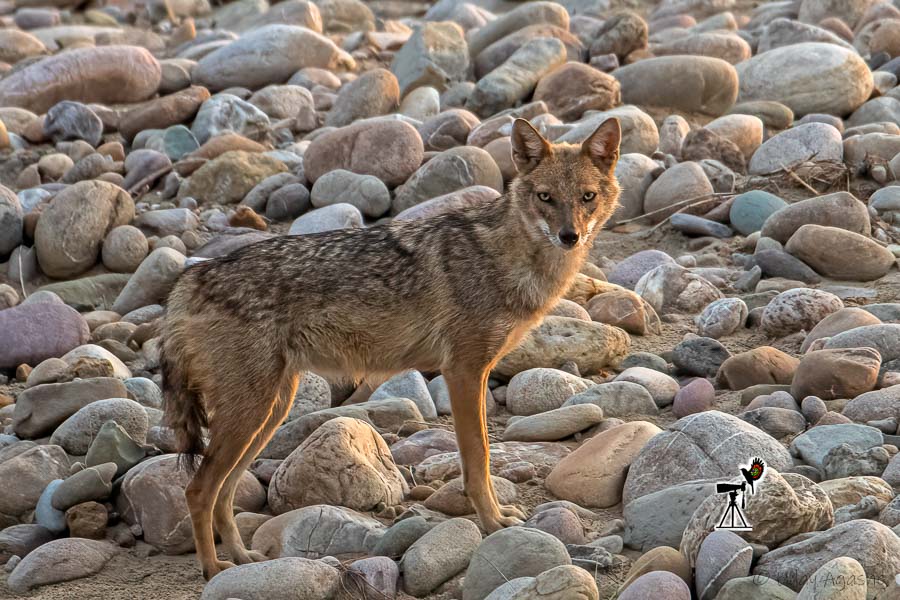
Jackal in river bed
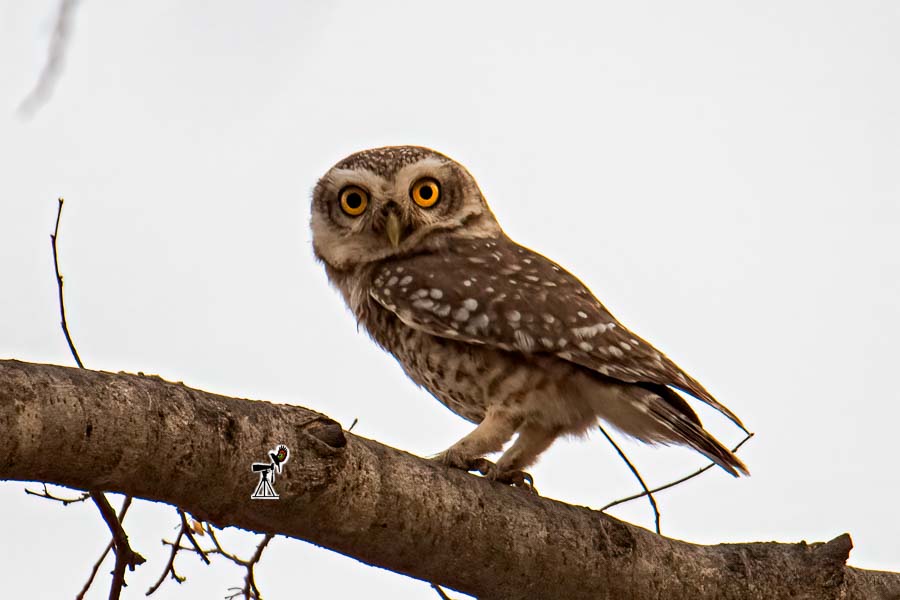
Spotted Owlet
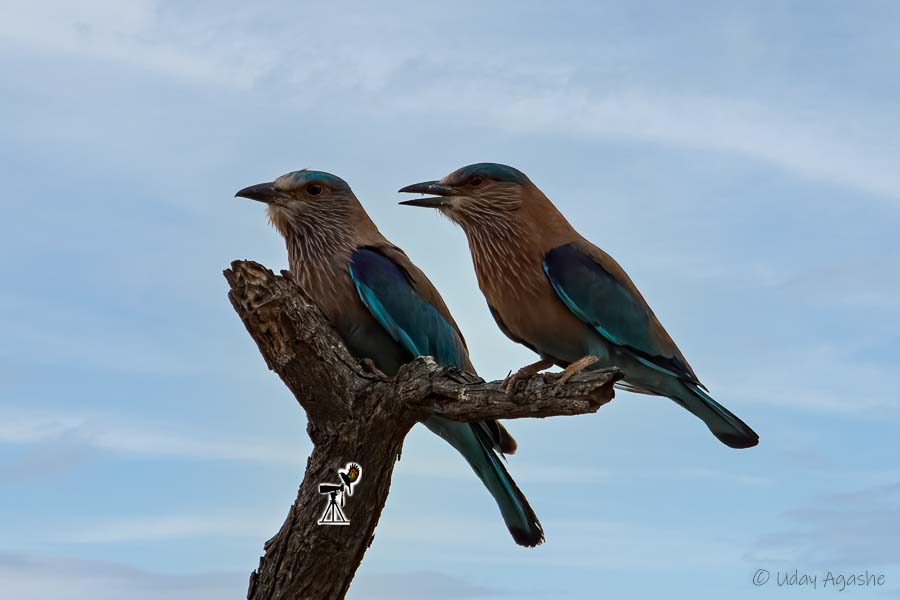
Indian Rollers
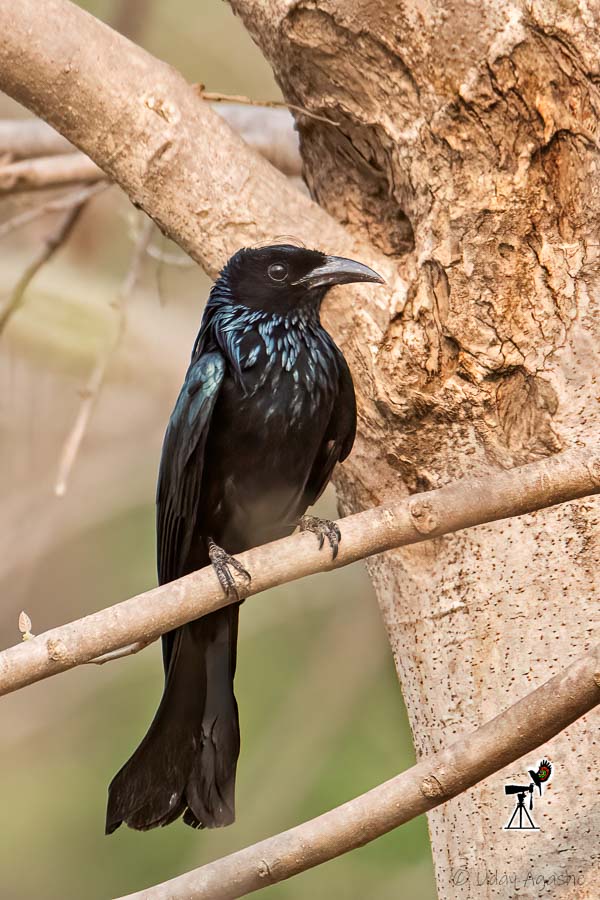
Hair-crested Drongo

Jungle Owlet
May 6, 2021
Our train was at 10 pm and we planned to reach the station by 8:30 itself to keep some buffer. It turned out to be a very wise decision. As we started unloading the bags at Ramnagar station, we realized that there was no electricity inside the station. Platforms were completely dark except for some generator-based illumination in the station-master cabin.
With that little light, we got our bags inside and were settling ourselves when suddenly it started pouring outside. It was already dark making the lightning strikes fearsome. This drama continued for 15-20 minutes after which power was restored and a little later even the rain stopped.


The train was on time, we reached Delhi at 4 am. Once again, we had booked a hotel as our train to Mumbai was at 5 pm. Both trains were empty and were on time.
By 10 am on 8th May we were all back safe-n-sound. Back home, the questions from friends and relatives were the same. Why take so much risk when Delhi was the hotbed of the COVID wave?
Frankly, I had no answer but the attraction of the jungle was compelling!!
Background music used for the videos is courtesy BenSound (Music: https://www.bensound.com)
-
Additional Info - Camera Gear
- Camera
- Canon 80D (Crop-sensor body)
- Lens
- Tamron 150-600 mm (version G2)
- Tripod
- Most of the photos (and videos) from the safari vehicles are taken using Beanbag
- Exposure
- Manual Exposure for all photos
- Focus Mode
- AUTO – except for objects in clutter